SPECIAL TOPIC Securing a Sustainable Future Together

EAGE NEWS Digital event rocks London
TECHNICAL ARTICLE Visualisation of seismic facies boundaries
VOLUME 41 I ISSUE 6 I JUNE 2023

cgg.com/earthdata SE E THINGS DI FF ERE NT LY ALL-ROUND BETTER SUBSURFACE IMAGING Scan the QR code to see for yourself.
CHAIR EDITORIAL BOARD
Gwenola Michaud (Gwenola.Michaud@cognite.com)
EDITOR
Damian Arnold (arnolddamian@googlemail.com)
MEMBERS, EDITORIAL BOARD
• Lodve Berre, Norwegian University of Science and Technology (lodve.berre@ntnu.no)
Philippe Caprioli, SLB (caprioli0@slb.com)
Satinder Chopra, SamiGeo (satinder.chopra@samigeo.com)
• Anthony Day, PGS (anthony.day@pgs.com)
• Peter Dromgoole, Retired Geophysicist (peterdromgoole@gmail.com)
• Rutger Gras, Consultant (r.gras@gridadvice.nl)
• Stephen Hallinan, CGG Stephen.Hallinan@CGG.com
• Hamidreza Hamdi, University of Calgary (hhamdi@ucalgary.ca)
Clément Kostov, Freelance Geophysicist (cvkostov@icloud.com)
Peter Rowbotham, Apache (Peter.Rowbotham@apachecorp.com)
• Pamela Tempone, Eni (Pamela.Tempone@eni.com)
• Angelika-Maria Wulff, Consultant (gp.awulff@gmail.com)
EAGE EDITOR EMERITUS
Andrew McBarnet (andrew@andrewmcbarnet.com)
PUBLICATIONS MANAGER
Martha Theodosiou (mtu@eage.org)
MEDIA PRODUCTION
Saskia Nota (firstbreakproduction@eage.org)
PRODUCTION ASSISTANT
Ivana Geurts (firstbreakproduction@eage.org)
ADVERTISING INQUIRIES corporaterelations@eage.org
EAGE EUROPE OFFICE
Kosterijland 48
3981 AJ Bunnik
The Netherlands
• +31 88 995 5055
• eage@eage.org www.eage.org
EAGE MIDDLE EAST OFFICE
EAGE Middle East FZ-LLC
Dubai Knowledge Village
Block 13 Office F-25 PO Box 501711
Dubai, United Arab Emirates
• +971 4 369 3897 middle_east@eage.org
• www.eage.org
EAGE ASIA PACIFIC OFFICE
UOA Centre Office Suite 19-15-3A
No. 19, Jalan Pinang
50450 Kuala Lumpur Malaysia
• +60 3 272 201 40
• asiapacific@eage.org
• www.eage.org
EAGE AMERICAS SAS
Edificio Centro Ejecutivo Santa Barbara
Av. Cra. 19 #118-95 - Office: 501
• +57 310 8610709
• americas@eage.org
• www.eage.org
EAGE MEMBERS CHANGE OF ADDRESS NOTIFICATION
Send to: EAGE Membership Dept at EAGE Office (address above)
FIRST BREAK ON THE WEB www.firstbreak.org
ISSN 0263-5046 (print) / ISSN 1365-2397 (online)
33 Direct visualisation of seismic facies boundaries and DHI detection of anomalous gas
Donald A. Vossler
41 Geologic causatives and seismic attributes heterogeneities for structural and stratigraphic interplays, Sitra Area, North Western Desert, Egypt Ahmed S. Abu-El Ata, Ashraf E. Ghonimi and Ahmed H. Hafeez
Sp ecial Topic: Securing a Sustainable Future Together
53 Will ChatGPT and related AI-tools alter the future of the geosciences and petroleum engineering?

Ruud Weijermars, Umair bin Waheed and Kanan Suleymanli
63 Using a self-growing neural network approach to CCS monitoring
Camille Msika and Ross Findlay
69 Plausible characterisation of subsurface geology is essential for the Energy Transition
Mike Simmons, Andrew Davies and Lawrie Cowliff
75 A machine’s perspective
AI chatbot ChatGPT (Sidney) and Neil Hodgson
79 Digging deeper with implicit modelling: a ground-breaking geothermal exploration approach in the absence of adequate seismic data
Oliver Ward
85 The role of seismic data in carbon storage
Dr Mike Branston and Ahmed Sameh
95 Gas to Europe: Exploring for Norwegian gas-richness in the Atlantic Margins
Adriana Citlali Ramírez, David Went, Bent Kjølhamar and Reidun Myklebust
Feature: Minus CO2 Challenge 2022
101 Carbon neutral development of a 400-million-barrel prospect at Penobscot, offshore Nova Scotia, Eastern Canada Mathilde Haemmerlein, Ahmed Eleslambouly, Bouchaar Rafik, Hosein Rezvani, Badr Eddine Berrehal, Bill Richards and Grant Wach
114
FIRST BREAK I VOLUME 41 JUNE 2023 1 Editorial Contents 75 cover: The theme of the Association’s Annual in Vienna is ‘Securing a Sustainable Future’ A machine’s perspective FIRST BREAK ® An EAGE Publication
EAGE News
Personal Record Interview
Monthly Update
Crosstalk
Industry News
3
17
18
20
23
Technical Articles
Calendar
European Association of Geoscientists & Engineers
Board 2022-2023
Near Surface Geoscience Circle
Esther Bloem Chair
Andreas Aspmo Pfaffhuber Vice-Chair



Micki Allen Contact Officer EEGS/North America
Adam Booth Committee Member
Hongzhu Cai Liaison China
Deyan Draganov Technical Programme Officer
Wolfram Gödde Liaison First Break
Hamdan Ali Hamdan Liaison Middle East
Vladimir Ignatev Liaison Russia / CIS
Musa Manzi Liaison Africa
Myrto Papadopoulou Young Professional Liaison
Catherine Truffert Industry Liaison

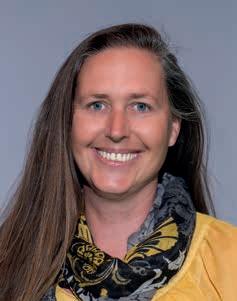

Panagiotis Tsourlos Editor in Chief Near Surface Geophysics
Florina Tuluca Committee member

Oil & Gas Geoscience Circle
Lucy Slater Chair
Yohaney Gomez Galarza Vice-Chair
Michael Peter Suess Immediate Past Chair; TPC
Erica Angerer Member
Wiebke Athmer Member
Juliane Heiland TPC
Tijmen Jan Moser Editor-in-Chief Geophysical Prospecting

Adeline Parent WGE SIC Liaison
Matteo Ravasi YP Liaison
Jonathan Redfern Editor-in-Chief Petroleum Geoscience

Giovanni Sosio DET SIC Liaison
Aart-Jan van Wijngaarden Technical Programme Officer
SUBSCRIPTIONS
First Break is published monthly. It is free to EAGE members. The membership fee of EAGE is € 80.00 a year including First Break, EarthDoc (EAGE’s geoscience database), Learning Geoscience (EAGE’s Education website) and online access to a scientific journal.
Companies can subscribe to First Break via an institutional subscription. Every subscription includes a monthly hard copy and online access to the full First Break archive for the requested number of online users.
Orders for current subscriptions and back issues should be sent to EAGE Publications BV, Journal Subscriptions, PO Box 59, 3990 DB, Houten, The Netherlands. Tel: +31 (0)88 9955055, E-mail: subscriptions@eage.org, www.firstbreak.org.
First Break is published by EAGE Publications BV, The Netherlands. However, responsibility for the opinions given and the statements made rests with the authors.
COPYRIGHT & PHOTOCOPYING © 2023 EAGE
All rights reserved. First Break or any part thereof may not be reproduced, stored in a retrieval system, or transcribed in any form or by any means, electronically or mechanically, including photocopying and recording, without the prior written permission of the publisher.
PAPER
The publisher’s policy is to use acid-free permanent paper (TCF), to the draft standard ISO/DIS/9706, made from sustainable forests using chlorine-free pulp (Nordic-Swan standard).
2 FIRST BREAK I VOLUME 41 I JUNE 2023
Caroline Le Turdu Membership and Cooperation Officer
Peter Rowbotham Publications Officer
Pascal Breton Secretary-Treasurer
Aart-Jan van Wijngaarden Technical Programme Officer
Esther Bloem Chair Near Surface Geoscience Circle
Lucy Slater Chair Oil & Gas Geoscience Circle
Edward Wiarda Vice-President
Jean-Marc Rodriguez President
Maren Kleemeyer Education Officer
Leading the way in the energy transition era
As he comes to the end of his 2022-23 term of office, EAGE president Jean-Marc Rodriguez reviews a year of change for the Association.

Reflecting on my time as president, it has been a very rewarding experience being able to work with the Board, management and staff to serve the membership at a significant moment in determining the future of the Association.
I refer particularly to the decision affirmed by members in February to restructure our old divisions to better align with the demands of the energy transition era. Grouping ourselves in three interlocking circles – Oil and Gas, Near Surface Geoscience and Sustainable Energy — recognises that geoscience and engineering knowledge, skills and experience are not confined exclusively to any one area. It promotes a more fluid, unified approach within EAGE.
Meanwhile we cater for more focused interests in our increasing range of Technical and Special Interest Communities which are well supported and appreciated by members.
With this strategy I believe that EAGE is putting itself at the forefront in being prepared to provide services to support today’s professionals navigating a world increasingly focused on moving away from fossil fuels. At the same time we are ensuring that our relevance to the next


generation of geoscience and engineering recruits.

There is no denying the future is a little scary. We just don’t know when and how far we can slow climate change. But I have come to understand over my year in office and previous time on the Board that our professional community has the capacity and desire to contribute to a more secure, sustainable future. It is an exciting time in our history.
Critical to the success of the decarbonisation initiative is knowledge and data-sharing across geographical borders, between industries and by all stakeholders
of the subsurface. All these initiatives will lead to jobs, investment, and economic growth, and I expect to see geosciences playing a vital role.
It is not always easy to work together from different backgrounds and experience. But transformation is in progress, maybe too early to draw definitive conclusions but I’m optimistic that we will make it a reality. The energy transition requires a people transition. We need to establish a compelling and inclusive purpose, backed-up by tangible action.
This year for the 84th Annual Conference and Exhibition in Vienna, we chose ‘Securing a sustainable future together’ as the overall theme. By this we meant to highlight the mission and possibilities for our professional members and the industries they serve — at a critical moment in history.
Climate action is often said to fall into three categories — Mitigation, Adaptation and Resilience — and from within the Association our geoscientists and engineers can provide transferable skills based on decades of experience with the oil and gas sector, all relevant to our energy future.
Mitigation covers all aspects of decarbonisation: carbon capture and storage,
FIRST BREAK I VOLUME 41 JUNE 2023 3
London Digital success 06 EAGE career benefits 14
HIGHLIGHTS
Latin America busy event schedule 16
EAGE president Jean-Marc Rodriguez.
renewables, particularly offshore wind, geothermal and hydrogen and — if nuclear becomes a viable option — nuclear waste disposal. Also included is the task of reducing carbon emissions from existing and future oil and gas exploration and production.
Adaptation invites initiatives to protect communities from the effects of climate change already happening – extreme heat,
flooding, etc. Resilience is the ultimate stage of building the sustainable communities needed for our future civilisation.
I believe that EAGE continues to lead the way in its multi-disciplinary approach to meet these challenges. In two words, continuity and disruption will be the keys to our success.

In the past year, the issue of energy transition has been the top of our agenda,
but I must congratulate our management and staff in restoring the Association’s fortunes after the Covid pandemic through careful husbanding of our resources. Our rich and inclusive programme of events and services continues to gain traction worldwide. The success of the major GET and Digital conference series is a good confirmation that EAGE is moving in the right direction. Equally the launch of the new Geoenergy journal should be a great shared resource for members addressing the multi-disciplinary nature of energy transition.
In closing I must acknowledge that the Association can only function with the selfless contribution of our volunteers in every department of activity – events, publications, education, awards, local chapters, students, etc. I sincerely thank you all and please know that through EAGE you are helping to make a difference to the society in which we all live.
Hungary’s young geoscientists present their potential
The 53rd ISZA Meeting of Young Geoscientists in Hungary held over 31 March - 1 April once again proved a showcase for emerging talent. It provided an excellent platform for 36 oral and 20 poster presentations on a multi-disciplinary range of topics including structural geology, geophysics, geochemistry, thermal convection, paleontology and microseismic monitoring.
The presentations were well-crafted and demonstrated the professional expertise of the 70+ young geoscientists in attendance. The research topics were intriguing and thought-provoking generating lively discussions that extended well over coffee breaks and at the end of the day. A jury reviewed the presentations and awarded prizes in three categories, including theoretical, applied, and posters.
Overall, the meeting proved to be an exciting and informative platform,
bringing together young members to share knowledge and discuss their future pathways, as well as strengthening our collaboration with local organizations supporting our joint community of early careers. The organisers would like to congratulate all the participants, and give a big thank to the supporters that made the 53rd ISZA possible.
The event was organised in Nagybörzsöny by associated societies in Hungary - the Association of Hungar-
ian Geophysicists and the Hungarian Geological Society, in collaboration with the EAGE Local Chapter Hungary and with support from a number of leading organizations in the field, including MOL, MinGeo, Geo-Log, O&GD Central, Elgoscar, Biocentrum, MS Energy Solutions, Vermilion Energy, Earth Physics and Space Science Research Institute, and the Supervisory Authority of Regulatory Affairs.

4 FIRST BREAK I VOLUME 41 I JUNE 2023 EAGE NEWS
ISZA 2023 provided the opportunity to renew our support for our early careers community in Hungary.
President on the Exhibition floor at EAGE Madrid.
MULTI-PARAMETER
FWI IMAGING Technology
MULTI-PARAMETER FWI IMAGING Technology
that delivers
that delivers
Powerful physics
Powerful physics
Rapid turnaround
Rapid turnaround
Superior imaging using field data
Superior imaging using field data
Simultaneous model building & imaging
Simultaneous model building & imaging
Significantly better illumination by using more signal (multiples, ghosts & prismatic waves)
Significantly better illumination by using more signal (multiples, ghosts & prismatic waves)
Reflectivity, velocity, anisotropy, AVA, source signatures, attenuation
Reflectivity, velocity, anisotropy, AVA, source signatures, attenuation

Obtain unrivalled results faster, even in complex salt environments, with DUG’s Multi-parameter FWI Imaging technology. Simultaneous model-building and high-frequency, least-squares imaging deliver accurate, high-resolution Earth models using field-data input—without the many time-consuming, subjective, serial steps of a conventional processing and imaging workflow!
Obtain unrivalled results faster, even in complex salt environments, with DUG’s Multi-parameter FWI Imaging technology. Simultaneous model-building and high-frequency, least-squares imaging deliver accurate, high-resolution Earth models using field-data input—without the many time-consuming, subjective, serial steps of a conventional processing and imaging workflow!

Drop by Booth 2300 at the 2023 EAGE Annual Conference & Exhibition to learn more!
Drop by Booth 2300 at the 2023 EAGE Annual Conference & Exhibition to learn more!
dug.com/fwi
•ISO 27001• OC M PASSASSURANCESERV SEC •ISO 9001• OC M PASSASSURANCESERV SEC
dug.com/fwi
Data
RTM DUG MP-FWI Imaging •ISO 27001• OC M PASSASSURANCESERV SEC •ISO 9001• OC M PASSASSURANCESERV SEC
A comparison between imaging results in a complex salt environment, offshore Gulf of Mexico. TOP: Conventional reverse time migration (RTM), after pre-processing and regularisation. BOTTOM: DUG MP-FWI Imaging result using field-data input. Superior resolution. Superior imaging.
courtesy of Shell
RTM DUG MP-FWI Imaging
A comparison between imaging results in a complex salt environment, offshore Gulf of Mexico. TOP: Conventional reverse time migration (RTM), after pre-processing and regularisation.
BOTTOM:
DUG MP-FWI Imaging result using field-data input. Superior resolution. Superior imaging.
Data courtesy of Shell
How London event rocked the digital world
The third edition of EAGE Digital under the theme ‘Technology Driving Innovation for the Future’ was a resounding success, bringing together over 450 delegates and 24 exhibitors in London on 20-23 March 2023. This is our report.


gates to connect with other participants and enrich their journey throughout the event. The conference also hosted Publications Dialogues, which allowed participants to chat about EAGE’s publishing opportunities and the upcoming joint special issue of Petroleum Geoscience and Geoenergy on ‘Digitally Enabled Geoscience Workflows: Unlocking the Power of Our Data’. The Meet & Greet with EAGE’s AI Technical Community offered participants a chance to engage with the powerhouse behind many of our initiatives related to digitalisation. There were also opportunities to get engaged with local chapters in the area, including London, Aberdeen, and Ireland.
It was amazing to see the pace of growth in this field and the high levels of enthusiasm and ambition for deploying the benefits of digitalisation at scale.
This year’s conference focused on digitalisation as a key enabler of innovation and industry transformation required for the energy transition. With more than 80 technical talks and over 20 posters, attendees were able to gain insights into digitalisation initiatives across the intersection of geoscience, engineering, data science, and energy transition. Key topics of technical presentations included digitalisation and insight generation, applied analytics and machine learning, the digital subsurface, and digitalisation as a lever for energy transition. The technical programme also included dedicated sessions on bringing OSDU into operations and how digital can be the key to successful CCS and energy transition.
To foster the exchange of thoughts and views beyond the more traditional scientific debates, the strategic programme addressed a broad range of organisational and leadership issues influencing the digital transformation of the energy industry. Discussions were driven by a different
key theme each day: Leadership and the business case for innovation, Innovative and digitally enabled workflows, and Enabling the energy transition through digital innovation.
The event was not just focused on technical aspects but also included social activities. The Icebreaker Reception and Conference Evening provided opportunities for delegates to network and socialise in a relaxed environment outside the conference sessions.
The community activities at EAGE Digital 2023 included Speed Mentoring, which provided an opportunity for dele-
Gabriel Guerra, vice president digital ventures, Shell and chair of EAGE Digital 2023 said: ‘I think we can proudly claim success at the end of this conference. We had great dialogue in depth about the impact we are having, and took the additional value of digital beyond what we’ve been doing. I am hopeful that maybe some new business has been co-created here or perhaps some new collaboration will emerge from this event. So it’s not just the quality of the presentations, but also the connections and the collaboration that’s coming out of this. So I’d be really hopeful that when we come to this event next year, we can
6 FIRST BREAK I VOLUME 41 I JUNE 2023 EAGE NEWS
Panel session in London.
Full house for Icebreaker.
hear about some of the successes that started in London.’
Overall, EAGE Digital 2023 was a critical step in furthering the discussion and generating insights on how the energy sector can continue to innovate and thrive in the future. The discussions, technical sessions, and community activities provided valuable insights into the latest trends and developments in digitalisation and their role in driving innovation and supporting the industry’s transition to a more sustainable future.
We would like to thank the sponsors, exhibitors, delegates, speakers, and committees for their support and participation. We look forward to seeing everyone again at the next edition of EAGE Digital, 25-27 March 2024 in Paris.



What participants had to say
‘We all know that digitalisation is helping to optimise the existing process and we have to continue to produce hydrocarbons because this will be the case for the coming decades anyway. But we have to decarbonise everything around digital, and find solutions about limiting the carbon footprint of all the digital activities. That’s the central thing that we have to achieve as some of the players here are working on it and engaging with start-ups to make it happen.’
– Jean-Marc Rodriguez, vice president exploration Asia Pacific, TotalEnergies and EAGE president

‘One of the key takeaways for me was how we address the human element of culture, adoption, and sponsorship by leadership in the companies themselves to move the agenda forward in terms of technology adoption. It was really great to get a good understanding of where people are at and the challenge of getting everyone on the same page.’ – Mark Bashforth, CEO, Ovation Data
‘This year we’ve heard people say things like, I have to fly air cover on the most innovative people so that they don’t get dragged down by traditional organisational values and approaches. So leadership’s transitioned. In many of our biggest oil and gas companies, I’ve seen a huge transformation in leadership, and that’s come out this year, not just through the leaders who have spoken about their journey, but when they’ve had members of their team present. I think that’s the
EAGE Online Education Calendar
biggest difference from last year. Last year was people tooling up. They’d been working during the pandemic to lay the foundations and now suddenly they’re out of the gate and running and they’ve got leadership that’s backing it.’ – Michael Wynne, vice president upstream solutions, S&P Global Commodity Insights
‘I’m really excited about the connections we’ve made and the follow up conversations that will happen after the meeting.’ – Jeff Allyn, CEO, StudioX
‘The interest is absolutely fantastic. There’s a lot of development going on behind the scenes with operators and even others in this space. They are working on tools and other solutions to help in the future and coming back year on year to see how much has changed, being able to check back in with people to see the evolution and revisit with some of these operators. It means that everyone can reconnect at different stages whether it’s on the development or operations side.’
– Daniel Swann, marketing manager EMEA, Ikon Science
FIRST BREAK I VOLUME 41 JUNE 2023 7 EAGE NEWS
FOR THE FULL CALENDAR, MORE INFORMATION AND REGISTRATION PLEASE VISIT WWW.EAGE.ORG AND WWW.LEARNINGGEOSCIENCE.ORG. 1 JUN10 AUG GEOLOGICAL CO2 STORAGE BY A. BUSCH, E. MACKAY, F. DOSTER, M. LANDRO, P. RINGROSE EXTENSIVE ONLINE COURSE 24 HRS (INCL. 7 WEBINARS OF 1-2 HRS EACH) 19-22 JUN GEOLOGICAL INTERPRETATION OF GEOPHYSICAL DATA FOR MINERAL EXPLORATION BY MICHAEL DENTITH IOSC 4 HRS/DAY, 7 MODULES 27-29 JUN ROCK PHYSICS FOR QUANTITATIVE SEISMIC RESERVOIR CHARACTERIZATION BY
IOSC 4 HRS/DAY * EXTENSIVE SELF PACED MATERIALS AND INTERACTIVE SESSIONS WITH THE INSTRUCTORS: CHECK SCHEDULE OF EACH COURSE FOR DATES AND TIMES OF LIVE SESSIONS
TAPAN MUKERJI
Presentations proved popular.
Posters made discussion point.
Keynotes in progress.
Case Study
Beating the Clock on Geological Data Delivery
Neubrex finds a seamless way to capture, deliver, and archive data with Lyve™ Mobile.
For a company like Neubrex, whose mission is to collect and deliver fibre optic sensing data to geoscience engineers working on design and development projects, time is of the essence. They rely on this data to study subsurface geological features, examine changes in subsurface wells, and assess risks. To accelerate the data collection and hand-off process, Neubrex turns to Lyve Mobile.
• Accelerated field data processing by 30-40%

• Improved data access times by 40%
• Reduced data delivery time two weeks
• Simplified data ingest/improved security
Their Story
Getting data into the hands of geoscience engineers.
Neubrex is an energy services company that uses distributed fibre optic sensing technology to make detailed measurements of 2D and 3D physical features and dynamic processes associated with underground well operations. As a critical part of the energy development and carbon management market, they collect and process this data in near real time at the field sites, allowing them to deliver insights and answers fast.
Their Challenge
Delays for days.
In the past, Neubrex used individual hard drives and small RAID systems to store on-site data. This made initial processing and filtering of top-line data difficult. Additionally, storing up to 500 TB of data on individual hard drives, organising those drives, and then keeping those drives secure through heat, humidity, dust, dirt, and rough terrain… well…that was perhaps even more difficult.
Their Goal
Accelerating data collection and delivery.
The sooner geoscience engineers can assess the data from underground wells, the sooner they can make informed decisions on how to improve energy production and execute operations in a way that’s both safe and environmentally sound. That said, Neubrex is always on the lookout for ways to capture, process, and deliver that data faster.

Their Solution
Edge-to-cloud victory with Lyve Mobile.
Nowadays, Neubrex has a better solution for wrangling data: Lyve Mobile by Seagate. As a full suite of integrated, high-capacity, data transfer solutions for edge-to-cloud workflows, Lyve Mobile helps teams aggregate, store, process, and move massive volumes of data fast and easily.
For Neubrex, their field engineers can quickly write data from their proprietary data acquisition systems onto Lyve Mobile Array units. Those units then interface immediately with high-powered processing systems. In essence, this means the team has an on-location data centre and is no longer at the mercy of network bottlenecks and dependencies.
As a result, Neubrex is getting data to the cloud up to 10 times faster and reducing processing time by 30 - 40%.
Additionally, Lyve Mobile makes it easier (and safer) for them to physically move data by eliminating the risks and confusion that come with using individual hard drives — just one Lyve Mobile Array alone holds up to 96 TB. Factor in the unit’s secure, ruggedized transport case, and teams can seamlessly move data by vehicle to wherever it needs to go next.
When it’s time to move data sets to the cloud, Lyve Mobile services with cloud import helps them transfer data from any endpoint, edge, or core location to any major cloud they choose — quickly, simply and securely. Neubrex simply pays a flat fee per device while Seagate handles
all the logistics and end-to-end support. Neubrex maintains sole ownership of and access to their data from beginning to end.
Neubrex has found that using Lyve Mobile cloud import is far faster than moving data via networks. They can transfer a full project data set of 500 TB to the cloud in just three days — including shipping time and direct ingress at the data centre with Lyve Mobile’s high-speed interface — compared to the 47 days it takes for a network transfer based on 1 Gbps bandwidth typically available in the field.

Lyve Mobile units are designed to interface easily with in-field data processing systems and high-throughput enterprise data centre systems. In turn, Neubrex can rapidly deliver the valuable information their customers have paid for.

“Measuring the current, dynamic status of subsurface conditions around a deep well during many engineering operations is a real-time, one-time operation. There is no second chance,” notes Dana Jurick, EVP and GM at Neubrex. “It’s crucial the data comes back in good condition and can be assessed quickly so we can generate the information and insights our customers expect and need while it’s still valuable. The faster we get the measurements from the field into the hands of an engineer, the faster that engineer or team can make assessments that lead to decisions. Lyve Mobile ensures that happens.”
Their Success
Faster service equals more business.
Neubrex helps customers know, as soon as possible, what’s going on in a well and the surrounding subsurface. Lyve Mobile has elevated their ability to do just that with simpler data ingest, better security, and faster in-field processing. They can also deliver raw data more efficiently to the cloud for archival and future access. In the end, this means more clients and smoother projects.
https://www.seagate.com/gb/en/products/data-transport/

Talk to our experts and learn more about mass-capacity mobile edge storage and data transfer service for your enterprise
Mexico Chapter open for business
The Americas EAGE Community keeps growing … We are excited to announce the launching of EAGE Local Chapter Mexico, a scientific community that will contribute to the promotion of geoscience and engineering in the region,

and support the capacity building of its members.
In an inaugural statement, the Chapter says: ‘As a team we are looking forward to promoting geosciences, supporting our community and engaging with differ-
UK geothermal talk details innovative seismic study
A broad overview on geothermal exploration using legacy and newly acquired geophysical data was the subject of a presentation by Dr Mark T. Ireland (Newcastle University) at the Local Chapter London meeting late March.
Dr Ireland explained that according to a 2021 UK Environmental Impact Assessment, almost half of energy demand for buildings was for space and water heating. In the UK emissions from heating account for approximately one third of CO2 emissions. Decarbonising heating is essential if the UK is to meet its Net Zero commitments.
If geothermal energy is going to contribute to decarbonising heating and cooling, it will require geoscientists to maximise the value of data and consider
cost-effective approaches to reduce the development risks associated with geothermal energy. Interestingly, geothermal exploration frequently relies upon existing data and interpretations that focus on hydrocarbon targets. Often these data are limited in extent and quality and may not clearly define geological heterogeneities which impact thermal hydromechanical coupling in geothermal systems.
Dr Ireland detailed what is required to maximise the value of legacy onshore well data in modern workflows and described recent experiences in a first of a kind seismic acquisition onshore the UK. The new seismic data included both active and passive surveys. For the active part ~3500 receivers were deployed and 1369 shot points were
ent activities. In summary, we project ourselves as a platform for developing networks, workshops, lectures, field trips, and provide technical visits to institutes and companies. We want to be a chapter for learning and sharing opportunities. As young professionals, it motivates us to have the opportunity to take our activities throughout Mexico and thus grow the EAGE professional network. Likewise, we are looking forward to participating in EAGE activities and events to make ourselves known internationally.’
The group counts 15 members with professional backgrounds in geological and geophysical engineering, thereby strengthening the EAGE network in the region, currently made up of one Local Chapter (Houston) and eight Student Chapters.
recorded over five days. For the passive part the receivers were recording ambient noise for 28 days. Acquisition was made significantly simpler logistically through not requiring public highways permissions as the site was at an airfield.
The presentation was followed by an active Q&A session, where practical, logistical and technical aspects of the presented dataset and its potential significance were discussed. A recording of the talk is available on the EAGE’s YouTube Channel.
EAGE Local Chapter London would like to thank Artem Kashubin (PetroTrace), Yulia Biryaltseva (Equinor), Celina Giersz (Stryde) and, of course, Mark T. Ireland (Newcastle University) for making this event possible.
10 FIRST BREAK I VOLUME 41 I JUNE 2023 EAGE NEWS
More info at:
The EAGE Local Chapter Mexico was officially opened in April 2023.
Join us as EAGE hosts co-located workshops
in Milan
Two workshops in one venue is the plan for the 7th EAGE Borehole Geophysics and 2nd EAGE Seabed Seismic Today workshops scheduled to be held simultaneously at the Melia Hotel, Milan on 18-20 September.

An exciting feature for the workshop attendees will be the joint session open to all attendees promising some lively discussions over half a day. EAGE will be ensuring that a number of integrated social events and networking opportunities take place throughout the days of the workshop.
We encourage you to not only register but secure your accommodation at the earliest for these two workshops, limited places available. For the technical programme visit the dedicated workshop websites. See
Workshop will visit Europe’s fastest supercomputer

The 7th EAGE High Performance Computing Workshop returns for its 2023 edition to Lugano, Switzerland on 25-27 September. It will include a special field trip to the Swiss National Supercomputing Centre (CSCS) home of Europe’s fastest supercomputer which enables worldclass scientific research through the pioneering and support of supercomputing technologies.
The three-day workshop will continue to feature cutting edge oral presentations, quick lightning talks, panel sessions and keynotes from the leading experts in the industry, as well as plenty of discussion sessions embedded into the programme.
We look forward to seeing you from the 25-27 September in Lugano for what is now the leading global HPC workshop.
Hydrocarbon seals workshop back for fourth time
The EAGE/AAPG Hydrocarbon Seals Workshop returns for its fourth edition on 28-30 November at a new venue of Al Khobar, Saudi Arabia. The main objective will be to enable geoscientists to understand and evaluate hydrocarbon seals for exploration purposes through presentations, posters, discussion materials and dynamic breakout sessions.
Given the increased enthusiasm to explore seal evaluation in order to understand the stratigraphic entrapment mechanism and more recently, the increase of CO2 sequestration activities gives rise to the importance of top and
lateral seal evaluation. Top and lateral seal should be evaluated thoroughly in any stratigraphic entrapment setting. This three-day workshop will present and discuss the advancement of a wide range of topics in seal evaluation from seal capacity estimation, geomechanics, seal integrity, CO2 sequestration aspects, AI in facies and petrophysical property, forward stratigraphic modelling and seal risk assessment.
For more information about the varied range of topics being covered, please visit https://eage.eventsair.com/
fourth-eageaapg-hydrocarbon-sealsworkshop-2023/event-overview.
We are also pleased to report Saudi Arabia’s Ministry of Tourism has relaxed tourist visa applications, a move that has streamlined visa applications and processing, thereby allowing travellers to explore the diverse destinations in the kingdom.
Visit us at https://eage.eventsair.com/ fourth-eageaapg-hydrocarbon-seals-workshop-2023.
FIRST BREAK I VOLUME 41 JUNE 2023 11 EAGE NEWS
Workshop will visit Europe’s fastest supercomputer.
you in Milan!
Or scan the QR code:
EAGE is coming to Milan.
Geophysical Prospecting (GP) publishes primary research on the science of geophysics as it applies to the exploration, evaluation and extraction of earth resources. Drawing heavily on contributions from researchers in the oil and mineral exploration industries, the journal has a very practical slant. A new edition (Volume 71, Issue 5) will be published in June, featuring seven articles.
Editor’s Choice articles:
• Selecting velocity models using Bayesian Information Criterion — Theodore Stanoev et al.
• Ensemble scenario-based inversion: A new approach for estimating the uncertainty of resistivity models derived from 3D controlled source electromagnetic data — Emmanuel Causse
Near Surface Geophysics (NSG) is an international journal for the publication of research and developments in geophysics applied to the near surface. The emphasis lies on shallow land and marine geophysical investigations addressing challenges in various geoscientific fields. A new edition (Volume 21, Issue 3) will be published in June, featuring five articles.
Editor’s Choice articles:
• Influence of input motion and surface layer properties on seismic site response: A stochastic simulation method–based MLR model — Özgür Yildiz et al.
• Finetuning ground penetrating radar velocity analysis from hyperbola fitting using migration — Jan Steinar Rønning
Basin Research (BR) is an international journal which aims to publish original, high impact research papers on sedimentary basin systems. A new edition (Volume 35, Issue 3) will be published in June, featuring fourteen articles.

Editor’s Choice article:
• Punctuated propagation of a corrugated extensional detachment offshore Ireland — Gaël Lymer et al.
Fibre optics sensing in the spotlight at workshop in China
Experts from all over the world are expected to gather for the 3rd EAGE Workshop on Fibre Optics Sensing for Energy Applications on 15-17 November 2023 in the historic cultural city of Chengdu, China.

The event should appeal to a range of professionals engaged in energy transition, including oil and gas, geothermal, coal industry, CCUS and other linked areas, including geoscientists, geophysicists, reservoir engineers, well completion, data scientists and civil engineers.
Event chair, Gang Yu (BGP) says: ‘The applications of fibre optical sensing for the energy industry in China have been booming during the last five years. Chinese optical sensing scientists, engineers and geophysicists are enthusiastic to share their knowledge and experience in optical sensing with experts from all over the world ’
The technical committee are inviting industry practitioners and researchers in the fibre optic sensing area to contribute to the workshop by 31 July 2023 on a wide variety of topics including renewables, environmental monitoring, smart cities and water resources (see website for full list).
The workshop should be a great opportunity to connect with key operating, service and technology companies such as BGP, CNPC, Aramco, Beach Energy, Chevron, CSIRO, Halliburton, OptaSense, PETRONAS, CNOOC, Silixa, Sinopec, TGS as well as representatives from academia. More information at: https://eage.eventsair.com/ 3rd-eage-workshop-onfiber-optic-sensing-for-energy-applications/
Or scan the QR code:
12 FIRST BREAK I VOLUME 41 I JUNE 2023 EAGE NEWS
OUR JOURNALS THIS MONTH CHECK OUT THE LATEST JOURNALS GP NSG BR
This workshop will be hosted at Chengdu, China.











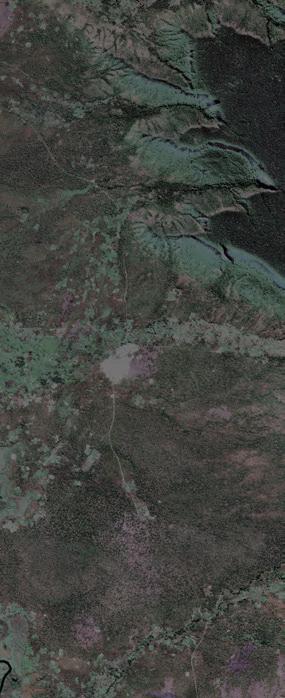
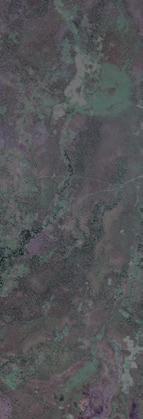
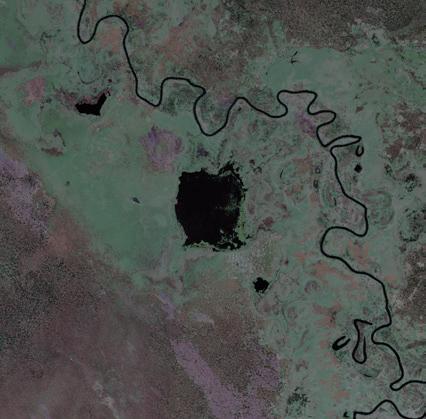







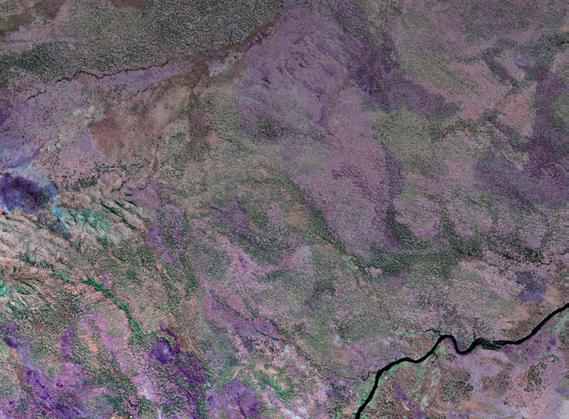










































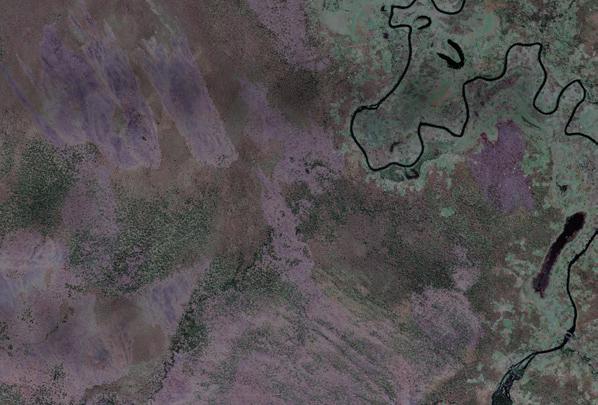














X Astana • X Bogota • X Geneva • X Houston • X Hyderabad • X Kinshasa X Luxembourg • X Madrid • X Ottawa • X Perth • X Pretoria • X Rio de Janeiro • X Toronto Our innovative airborne geophysical technologies allow for efficient exploration reducing environmental impact
Early career benefits with EAGE

At EAGE we know that, as the energy sector undergoes critical changes and the pace of technological innovation accelerates, it is more important than ever for a professional association such as ours to engage with and support our early career members. They are the future of the industry and of research, so it is essential they find their way to the driving seat.
Across our global network and all our activities, we endeavour to offer paths for younger members to connect and excel, allowing them to make the most of their membership and to grow within the Association. Here are some stories that may inspire you.
in my field of interest) that can help me widen my contacts and perspectives?
Taking the lead
transformations driven by new technology. And while we strive to offer a ‘home base’ for each interest, you are never limited to only one community or role. You may have
Creating new connections
Participating in local chapters is a way to dive deep into the opportunities and the community in your area. LC Aberdeen and Fugro, for instance, recently facilitated a visit for local MSc students to the seismic survey vessel Fugro Galaxy. The rationale was that ‘placing students in working environments as part of their training in technical subjects such as geophysics is as essential as classroom, fieldwork and laboratory sessions. These opportunities allow students to gain a feel for a job and can be the spark that ignites a successful career’.


Needless to say, this was a fantastic experience for all those involved. And even though vessel visits are not a common activity, opportunities to connect with members who are where you would like to be in five, 10 or 20 years and can share wisdom from their own experience are everywhere at EAGE. Ask yourself: Is there an EAGE community in my area (or
Joeri Brackenhoff was one of the founding members of Local Chapter Netherlands while he was still a student member finishing his PhD. ‘I wanted to join to ensure that the Chapter would have a focus on students and young professionals,’ he said. ‘It is something I still feel strongly about today. The field of geoscience is a very dynamic one, especially given the current energy transition and the various engineering challenges presented by, for example, the new focus on the mining industry in Europe. As a member of the LC team, you can stay in touch with these new developments and propose topics that you yourself are interested in. I helped organise a meeting on the use of VR in geoscience which is something that I had not heard much about previously. And not just that. Taking an active role is an excellent way to build your network and get your name out in both industry and academia. People notice when you are present at events and I feel this experience has been helpful for me in my professional career. The team itself is also quite diverse in terms of experience and area of expertise, so there is plenty to learn from the other members.’
It is very encouraging to witness an increasing number of young members actively participating in various roles, just like Joeri, and there is certainly room for more. Do not hesitate to volunteer as a session chair, reviewer or committee member. Not only will you have the possibility to work side by side with more experienced members, but you will also contribute to new developments that might have a positive impact on your own career and that of many others.
Choosing your journey
Becoming an active EAGE member from an early stage is much more than just volunteering and enjoying membership benefits. It is about saying ‘yes’ to learning opportunities and thinking in terms of skills development, whether it is about exploring career options (and collaborations) across different fields, or keeping up with the
joined our AI community for periodical advice on digitalisation, for example, and might be thinking of participating in the hackathon at the EAGE Annual, but you may also find inspiration at the Young Professionals Special Session and are welcome to be a speaker or chair at the next EAGE Digital Conference.
Celebrating talent
In fact EAGE has numerous ways that allow the spotlight to shine on your early career and potential achievements. There are all sorts of recognition available to our younger members, including for early career contributions, outstanding publications, student competitions and thesis works. If you know someone deserving of an award, or would like to challenge yourself, do not hesitate: team up, start a nomination package or join a competition. Keep an eye out at the EAGE Annual for a special announcement: this year exceptionally we will celebrate not one, but two recipients for the EAGE Arie van Weelden Award 2023, the recognition for contributions by members aged 35 or younger.
So, if you are finishing your studies or navigating the first steps of your career in geoscience and engineering, think about this: What type of network do I need to reach my goals? Does multi-disciplinary, multi-sector and international fit the description? Then EAGE is the right place for you, and not only for finding contacts and resources, but also for actively shaping your journey.
14 FIRST BREAK I VOLUME 41 I JUNE 2023 EAGE NEWS
Multiple early career opportunities are available to enrich our members journey.
University of Aberdeen MSc Geophysics students and staff aboard the MV Fugro Galaxy.
NSG2023 to feature Best of SAGEEP from New Orleans
This is a heads up for those planning on attending NSG2023 (3-7 September, Edinburgh), our flagship near surface geoscience event, that our collaboration with Environmental and Engineering Geophysical Society (EEGS) and the annual SAGEEP event continues as ever.
If you attended SAGEEP 2023 in April in New Orleans you might have come across some of the outstanding
talks presented in the ‘Best of EAGE Near Surface 2022’. To complete the exchange, the four best papers from SAGEEP 2023 will be invited to present in Edinburgh.

If you missed the ‘Best of EAGE Near Surface 2022’, you can catch up with all four papers in EarthDoc: Assessing quantitatively interpretable zones from 1D forward modelling AEM inversion models , by Wouter
Deleersnyder et al.; Distributed Acoustic Sensing (DAS) for Detection of Defects in Dams using Ambient Noise Interferometry, by Anna Stork et al.; A semi-airborne EM study of the Hope ore deposit (Namibia) using a dronebased concept, by Philipp Kotowski et al.; and Coupled Hough-transform and deep learning for improved diffraction delineation, by Magdalena Markovic et al.
Kuala Lumpur will again host workshop on quantifying uncertainty in depth imaging


will focus on the evolution of workflows to carry uncertainty information and its use to facilitate risked decisions at the portfolio level or within the end to end workflows of subsurface characterisation.
Join us to connect and network with key operators, host authorities, service companies and academia from the region namely PETRONAS, SLB, PTTEP, Saudi Aramco, Woodside Energy, Chevron, Shearwater, Halliburton, China University of Geosciences Beijing and others. Find more information about the workshop and abstract submission guidelines via https://eage.eventsair.com/2nd-eageworkshop-on-quantifying-uncertainty-in-depth-imaging/
21-22 November 2023
Or scan the QR code:
FIRST BREAK I VOLUME 41 JUNE 2023 15 EAGE NEWS 4 JUN FINAL LAURIE DAKE CHALLENGE VIENNA, AUSTRIA 5-8 JUN 84TH EAGE ANNUAL CONFERENCE & EXHIBITION (STUDENT ACTIVITIES) VIENNA, AUSTRIA 30 JUN FIRST SELECTION ROUND MINUS CO2 CHALLENGE ONLINE EAGE Student Calendar FOR MORE INFORMATION AND REGISTRATION PLEASE CHECK THE STUDENT SECTION AT WWW.EAGE.ORG
The 2nd edition of EAGE Workshop on Quantifying Uncertainty in Depth Imaging returns to Kuala Lumpur, Malaysia from
and intends to build on the discoveries and alignment provided from the previous event. The workshop
Kuala Lumpur night sky.
Latin America to host dedicated energy transition events
EAGE is set to develop a series of energy transition events in Latin America that may bring forward innovative ideas, cutting-edge research and novel alliances intended to secure a sustainable future.
On 5-6 October in Medellín, Colombia, the First EAGE Workshop on Hydrogen & Carbon Capture Sequestration in Latin America will focus on the understanding of lessons learned, critical technologies, resources availability and needs, business models, and regulatory and legislative requirements to pave the way for a hydrogen and carbon capture, sequestration, and utilisation (CCSU) sustainable energy strategy. You can still contribute to the event’s Technical Programme by submitting your paper by the deadline of 19 June 2023.
The First EAGE Workshop on Water Footprint , taking place a few days later in Bogotá, Colombia (19-20 October), will highlight water footprint as a key element for integrated water management processes and its role in providing future energy resources in an environmentally responsible manner. We welcome companies and individuals interacting with water resources that are continuously seeking to understand the dynamics, advances, research, and projects being developed in the productive and academic sectors.
The role of mining in energy transition is the main focus of the Third EAGE Workshop on Mineral Exploration in Latin America, coming on 9-10 November in Santiago, Chile.

The workshop is designed to provide attendees with the latest developments in mineral exploration and the role of minerals in powering renewable energy technologies. The potential topics include the latest technologies and techniques for mineral exploration, the challenges and opportunities facing the mining industry, and the role of mining
experiences and lessons learned during geothermal resources exploration, development and exploitation stages. If your research contributes to the establishment of appropriate practices for commercial uses of geothermal resources in the region, you are invited to submit your abstract before 1 August. If you are looking for financial support to attend this workshop,
in powering the transition to a cleaner, greener future. Be part of the speakers line-up by sending in your abstract by 1 August.
On 15-17 November, Guanacaste, Costa Rica will host the Second EAGE Workshop on Geothermal Energy in Latin America, an event dedicated to share
PACE Support is available for accepted speakers, so check out the requirements and apply until 15 August. Or scan the QR code:
16 FIRST BREAK I VOLUME 41 I JUNE 2023 EAGE NEWS
DONATE TODAY!
The EAGE Student Fund supports student activities that help students bridge the gap between university and professional environments. This is only possible with the support from the EAGE community. If you want to support the next generation of geoscientists and engineers, go to donate.eagestudentfund.org or simply scan the QR code. Many thanks for your donation in advance!
Latin America will host a series of events that intend to pave the way for a sustainable future.
Personal Record Interview
Tales of an itinerant geoscientist
Gehrig Schultz , an American ex-pat now in London as COO of EPI Group’s Geoscience division, experienced many unlikely parts of the world mainly managing onshore seismic operations for Western Geophysical, Grant Geophysical and PGS Onshore. Most memorably he was for seven years CEO of the Romanian company Prospectiuni, It’s first western employee.
Your peripatetic upbringing
I am a third-generation wanderer. Dad was born to medical missionaries running a leper hospital in India. Mom started out as a Peace Corps Volunteer in Ecuador where Dad was an agricultural missionary flying crossbred livestock across the Andes in an old Fokker aircraft. Between when I was born in Ecuador and graduated from high school in Mexico City, I lived in seven countries and five US states. I have now lived in 16 countries and worked in over 40.
Your seismic experience
I saw my first seismic crew at 14 in Guatemala’s Peten jungle. A civil war was raging in Guatemala City, so a friend’s father took his son and me to a seismic crew. It was a boy’s adventure dream. We drove bulldozers, found unexcavated Mayan ruins, flew in helicopters and slept in hammocks. I never wanted to do anything else.
From CSM to Western Geophysical
The party manager on the crew in Guatemala told me if I wanted to work on a seismic crew, I should attend Colorado School of Mines (CSM) and call Western when I graduated. So that is exactly what I did. I wanted to spend a few years working on crews, go into processing and become an interpreter. It has taken me 35 years to get there …
Memorable onshore challenges
The challenge is always communicating with people. One time I was working in Gabon’s Central African jungle after a year in the Amazon. One drilling crew’s
production quickly declined to zero so I flew out by helicopter to see what was happening. I found half the crew living out in the rain sleeping in the bush. Asked why, the foreman’ said ‘They are bad … They are from the other tribe.’ We went around in circles for an hour before I realised that it was my fault! I had picked men with broad strong chests to be drillers in the process and mixing up two tribes that couldn’t work together.
Boss in Romania

I grew up in the Cold War and never expected to visit Eastern Europe. It was wonderful discovering that the propaganda was false. Lovely smart, hardworking people. Prospectiuni had a strong team who were approaching retirement. We urgently had to train a replacement generation. The partnership with the University of Bucharest was a key but we ended up buying the Open University’s Romanian branch to teach business skills.
Work these days
My division works on nuclear waste storage, geothermal and hydrocarbons. Much of the work is in Eastern European thrust belts and African Rifts. I also keep a hand in passive seismic and seismo-electric technology development.
A born volunteer
Absolutely. These days I do volunteer work for The Leprosy Mission, a UK-based charity. Over time I have organised handson practical geophysical experiences for students in several countries. This started in Venezuela when our messenger was
robbed, losing data tapes he was bringing to Western’s processing centre. The insurance company would only offer $25 to replace the physical tapes so we had to acquire new data. We had students from two universities acquire 14 km of 2D doing tasks from surveying to observing. For the next five years, Western organised student field camps. In Romania, Prospectiuni had a great partnership with the University of Bucharest, holding eight summer field camps which included students from Hungary, Poland and Serbia. We also organised student geophysical practices in Senegal, Ghana and Kenya.
The late PhD
It emanated from the student field exercises in Romania. After 30 years in seismic, I learnt how magnetotellurics and gravity could calibrate and constrain seismic to solve geologic problems. When we acquired new data over an oil field discovered in the 1890s (based on seeps and developed without geophysics), none of the new geophysical data tied with the old wells so I had to figure out why. This became my dissertation.
That postcard habit
My nieces asked me to take pictures of a popsicle stick character in the children’s book Flat Stanley for a school project. Flat Stanley got lost so I started sending postcards to them instead. I found that I enjoyed writing postcards to share a short anecdote or a description. I have been sending cards since the late Nineties. It’s great getting a thank you note in wobbly writing.
FIRST BREAK I VOLUME 41 JUNE 2023 17 PERSONAL RECORD INTERVIEW
Gehrig Schultz



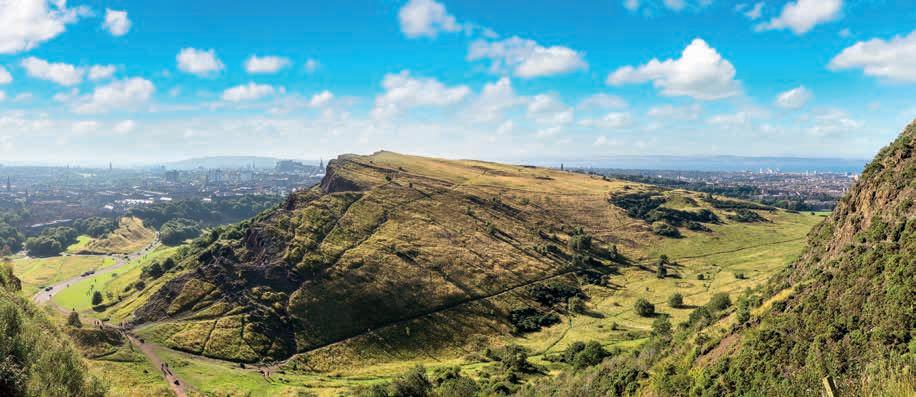






18 FIRST BREAK I VOLUME 41 JUNE 2023 Make sure you’re in the know EAGE MONTHLY UPDATE CHECK OUT THIS MONTH’S ARTICLES SIGN UP TODAY AND JOIN US! WWW.EAGENSG.ORG SUBMIT YOUR ABSTRACT! TOWARDS A SUSTAINABLE ERA OF GEOENERGY 27-30 NOVEMBER 2023 PORTO I PORTUGAL www.petroleumgeostatistics2023.org www.learninggeoscience.org 2–4 OCT 2023 THE HAGUE, THE NETHERLANDS WWW.IOR2023.ORG INNOVATIVE AND OPTIMISED RESOURCE UTILISATION REGISTER TODAY! REGISTER NOW! 10-15 SEPTEMBER 2023 MONTPELLIER • FRANCE CONTRIBUTIONS WELCOMED!

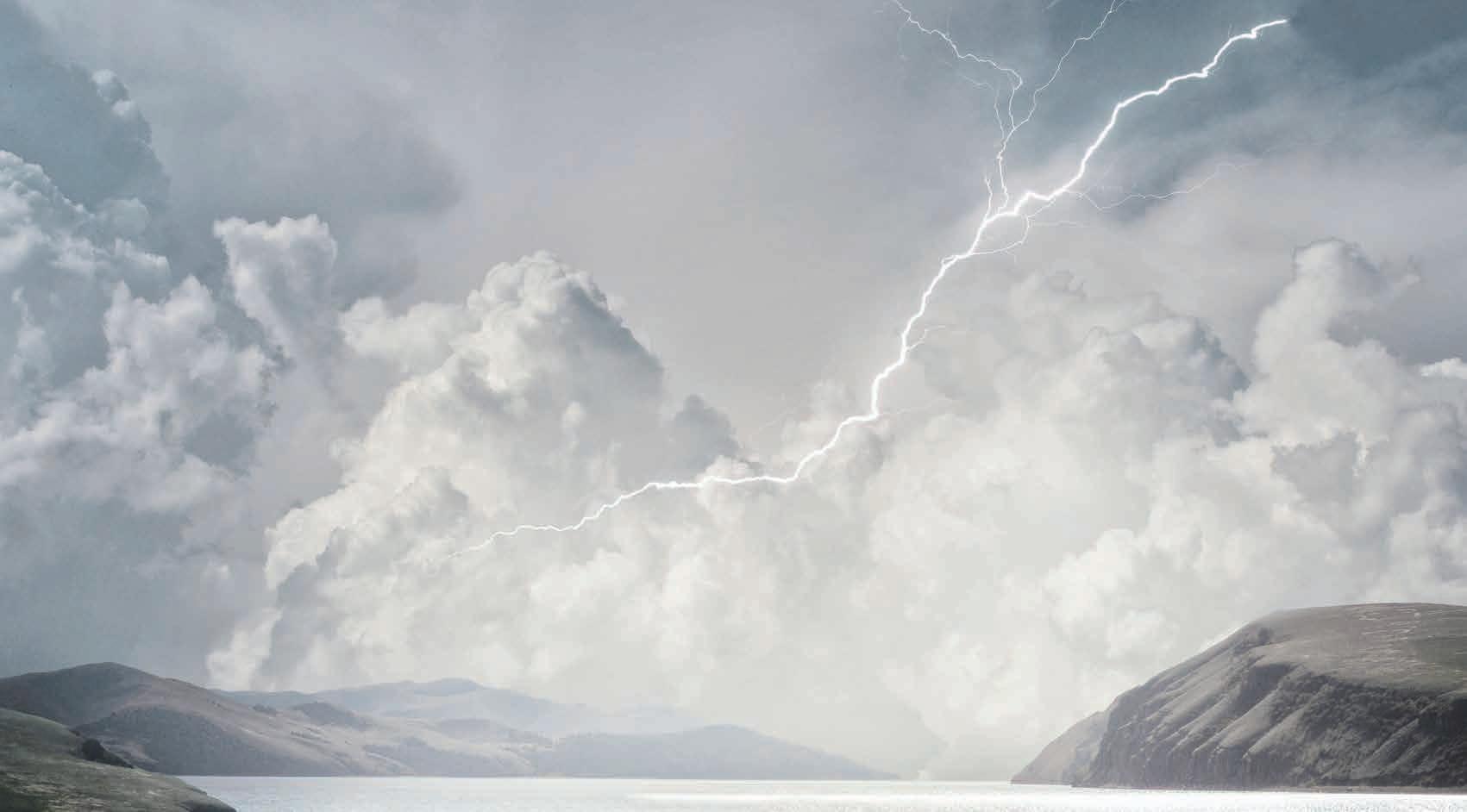





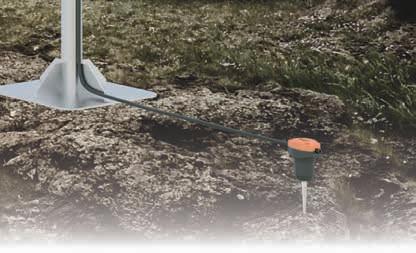












CROSSTALK
BY ANDREW M c BARNET
Long overdue recovery is underway
At this year’s EAGE Annual Meeting in Vienna, those guiding the fortunes of the marine geophysical services business may not be calling for a rendition of Let the good times roll, the blues song first recorded in the 1940s by Louis Jordan, accompanied by the splendidly named Tympany Five, and covered since by legendary artists such as B.B. King, Ray Charles and Sam Cooke.

However, there is no doubt that things are looking up after a decade of misfortune. To continue in lyricist vein, ‘Blue skies from now on’ this may not be, but latest results indicate the main players may soon be making real money.. Resuscitation from the devastating downturn in 2013-14 may well have happened sooner if it had not been for the outbreak of the Covid-19 pandemic, the opportunistic oil supply intervention by OPEC+, led by an unholy alliance of Saudi Arabia and Russia, and then in February 2022 the indefensible Russian invasion of Ukraine.
Broadly speaking, by 2019, after a period of serious abstinence, major international oil company spenders were embarking on a cautious review of reserves replacement at what was arguably the start of an upcycle. Expectations of at least a modest recovery in the seismic business were high.
That hope proved illusory. The 2020 global economic crisis in the wake of Covid and all the other reversals meant oil and gas service providers once again had to batten down the hatches and retreat into survival mode. Ironically for those still standing, this unexpected disruption contributed to the brighter future now beckoning.
What happened in the interim was a reality check. A combination of staggeringly high energy prices affecting domestic consumers and the threat, real or perceived, of serious shortages suddenly put energy security at the top of the agenda for governments and the people they serve. The shock made clear industrialised countries would not be giving up the fossil fuel habit anytime soon, suddenly deaf to climate change activists who had been making ground in many countries. Even the US Biden
Administration had palpitations and was looking for measures to maintain supply to the gas pumps at a reasonable price.
During 2022 the delayed upcycle began to kick in as global economic catastrophe appeared to have been averted amid a realisation that the oil and gas industry was needed during the Energy Transition. Recessionary fears still haunt many OECD countries where high interest rates threaten growth. But the conditions for a notable increase in E&P oil and gas activity worldwide are in place and showing up in results from both oil companies and the service sector. Whether this turns out to be a bonanza is open to question.
Much depends on the supermajors currently enjoying the stupendous profits earned from high crude prices and cost-cutting during the Covid period. ExxonMobil and Chevron between them reported in April first quarter profits of $18 billion, their best results since 2008. These results and those from the big European companies may be freakish. Even so, most analysts believe that Big Oil will maintain capital discipline, in other words continue to reward stakeholders and buy back shares rather than throw their money about on long-term frontier exploration or on a greater ratio of investment in Net Zero targets. For example, a WoodMackenzie analysis suggests, ‘Upstream budgets are up 10% for the year, and we forecast global investment will rise to around $480 billion in 2023. That’s well above the cyclical low of $380 billion in 2020 though barely half the 2014 peak.’
Oil price and supply and demand all seem to be in flux. The expected recovery in the Chinese economy has to be factored into any world energy outlook. Meanwhile not for the first time the IEA and OPEC+ are at odds. The recent output cut to maintain current price levels adopted by the oil producer organisation was rebuked by IEA director-general Fatih Birol. He protested that ‘higher crude prices and upward inflationary pressures would result in a weaker global economy, with low-income nations likely to be disproportionately affected’. OPEC Secretary-General Haitham al-Ghais fired back: ‘The IEA knows very well that there is a
20 FIRST BREAK I VOLUME 41 I JUNE 2023
•
•
BUSINESS
PEOPLE
TECHNOLOGY
‘The main players are actually making money’
confluence of factors that impact markets. The knock-on effects of Covid-19, monetary policies, stock movements, algorithm trading, commodity trading advisers and SPR releases (coordinated or uncoordinated), geopolitics, to name a few.’
No matter whose forecast is right, oil companies are spending more on E&P and the services companies will surely benefit. Olivier Le Peuch, CEO of SLB, stated recently that ‘The international and offshore markets continue to experience a strong resurgence of activity driven by resilient long-cycle development and capacity expansion projects’. Le Peuch even alluded to recent OPEC+ decisions continuing to keep commodity prices at supportive levels – providing operators increased confidence to execute their projects. Jeff Miller, CEO Halliburton, echoed these sentiments saying his company anticipated year-on-year international growth in the high teens, and North America growth to exceed 15%.
Marine seismic companies are already feeling the uptick. Streamer survey rates are said to have doubled in the last year and there seems every prospect that vessel availability may soon come under pressure. In the past the next chapter in the story would be a wave of new investment in seismic boats to catch the upswing, followed by the inevitable crash.
That is highly unlikely to happen this time. The market has undergone a radical change. Ten years ago there were over 60 serious towed-streamer seismic vessels competing for work. Today the number of active vessels is around 17 with a few in the wings that could be rigged quickly. Streamer counts are way down from approximately 600 to 200.
There is very little slack in the system. For a start, the competition is basically down to two players, Shearwater GeoServices and PGS. Shearwater lists 23 vessels total in its fleet of which eight are currently on towed-streamer business, some are source vessels and five are ocean bottom operational vessels, so not much room there. PGS has eight towed-streamer vessels, six of which were active over the winter and a seventh is being added this summer. Multi-client specialist TGS appears to have recognised the potential back-up in vessel availability for its business and has signed a multi-year agreement with Chinese company COSL for access to 2D, 3D and source vessels ‘at stable and predictable prices’, always a priority for multi-client operators.
It is inconceivable that any perceived shortage of global towed-streamer capacity will be addressed by another round of new building. There is no appetite in the financial markets, even in Norway, for the size of investment required and unavoidably its association with oil and gas, not to mention the lead time when supply chains issues everywhere are taken into account. Furthermore, towed-streamer is a mature technology, so new ships would not offer much in the way of technology differentiation.
Most problematic, however, is guessing how much towed-streamer capacity will be needed in future when ocean bottom node surveys are already taking up at least 30% of the
offshore seismic market. When the overall demand is high, that may not be seen as an issue. International oil companies (IOCs) are leaning into more conventional exploration strategies to open up production from the global hotspots, some already being exploited.
Targets spoken of in no particular order include Guyana, Suriname, Argentina, Brazil, Gulf of Mexico, Eastern Canada, Namibia, South Africa, the Mediterranean, East Africa and Australia. A caveat here is that many of these areas are not necessarily easy to access for oil business because of increasingly stringent ESG and other licensing conditions.
As we know, OBN seismic owes its inexorable rise to the uncontested improvement in subsurface imaging over towed-streamer technology that having sensors on the seabed enables. Importantly operational costs and survey times have come down, although no company’s technology solution to date has proved an undisputed winner. OBN seismic benefits proved perfectly timed to meet oil companies’ strategy of recent years to focus on maximising existing reservoir output and developing near field reserves, in other words eschewing the risks of frontier-type exploration.
In its recent purchase of Magseis Fairfield, the largest OBN operator, TGS is obviously looking to growth in the global 4D seismic market where nodes are becoming the ‘go to’ for timelapse reservoir monitoring, the costs outweighed by the improved subsurface imaging. Middle Eastern countries and mature oil provinces will be the obvious target for more business.
Principal competition for TGS comes from BGP (very well established in the Middle East), PXGeo and Shearwater. In this upcycle there is probably plenty of work to go around and indeed a global shortage of nodes could soon frustrate the market. However, the jury is still out on how profitable OBN business can become. TGS bought Magseis Fairfield knowing it was not making money but believes it can be turned around. Contrast that with PGS. In recent years the company may have felt too constrained by its financial circumstances, yet the company continues to resist giving OBN business serious consideration, reputedly because of its uncertain economics.
A decade ago no discussion of the offshore seismic market would have been without mention of Schlumberger/WesternGeco and CGG. Both have stepped away from the front line of offshore operations, but still are interested in engaging in some multi-client surveys in prospective areas. Instead they see their future leveraging their evolving digital and processing expertise to provide companies with insights and solutions in exploration and production applications, and also enter new markets outside the industry. Their hope is that this strategy copes better with the ups and downs of oil company E&P spending with more business opportunities.
Postscript: Not sure whether there is a message here, but the flip side of Louis Jordan’s Let the Good times roll was a big hit entitled Ain’t nobody here but us chickens!
Views expressed in Crosstalk are solely those of the author, who can be contacted at andrew@andrewmcbarnet.com.
FIRST BREAK I VOLUME 41 JUNE 2023 21 CROSSTALK
‘OBN seismic benefits proved perfectly timed.’
WANT TO IMAGE COMPLEX AREAS?
Broaden your frequency content



































































TPS (Tuned Pulse Source) generates useful signal a full octave in addition to standard sources. The low frequency content enables a deeper and a more efficient penetration of the seismic waves making the TPS the ideal choice for imaging targets under complex overburden such as sub-salt and sub-basalt.

www.sercel.com ANYWHERE. ANYTIME. EVERYTIME. Nantes, France sales.nantes@sercel.com Houston, USA sales.houston@sercel.com TPS™
Innovative seismic monitoring campaign for CO2 reservoir in the North Sea proves it worth


because we were able to quickly carry out the first monitoring of the reservoir and thereby obtain important information about where the stored CO2 is located in the reservoir. The operation was a great success, where we have collected high-quality data with safety and efficiency in mind. This enables Project Greensand to set new standards for CCS surveillance,’ said Habib al Khatib, CEO of SpotLight.
calculations of the design of the reservoir, it becomes possible to say exactly where the CO2 is located in the reservoir and how it moves.
A consortium has successfully demonstrated an innovative ocean bottom seismic monitoring technology for monitoring of CO2 stored at the bottom of the North Sea subsoil. The survey has shown that CO2 injected offshore Denmark in March is where it should be.
‘Frequent seismic monitoring is essential for the safe and permanent storage of CO2 and Project Greensands has clearly demonstrated that seismic monitoring technology developed for the project is proving successful,’ said the Project Greensand consortium comprising TGS, Spotlight, Wintershall Dea, Esvagt and Teknologisk.

The new technology ensures more frequent control of the Nini West field in the North Sea, while at the same time achieving less impact on the environment and climate, the consortium added.

‘After the first CO2 storage, it was important for us to demonstrate the efficiency and flexibility of our monitoring solution. Among other things, we did this
In March the first CO2 was stored offshore Denmark in the former Nini West reservoir at Esbjerg in the Danish North Sea. In one month, the consortium partners carried out a baseline measurement as well as two seismic monitoring measurements of the reservoir 1800 m below the seabed and can now conclude that the monitoring technology can safely and efficiently locate CO2 in the sandstone reservoir.
‘During the first storage of CO2, it emerged that this method of spot measurement constitutes one of the most important innovative technologies in Project Greensand. We are therefore very pleased to see the technology become a reality with the monitoring and the successful results,’ said Andreas Szabados, asset manager Denmark at Wintershall Dea.
The innovative air source monitoring technology for generating a seismic sound pulse works by examining sound movements at carefully selected points on the seabed above the reservoir. By comparing data from the selected points with previous
To acquire the seismic measurements, Project Greensand used technology developed with seismic expertise from TGS, which, in addition to providing energy data and intelligence, specialises in equipment and operations for ocean bottom seismic measurements and modular solutions: ‘Together with our partners, we have shown that three seismic surveys can be performed only a few weeks apart during the North Sea winter season. The operations were extremely efficient and were completed in just a few hours,’ said Tone Holm-Trudeng, NES – director, offshore subsurface solutions at TGS.
Comparable offshore seismic measurements are traditionally made every few years, but now measurements can be made every few weeks and months, while the local marine environment is less affected.
‘The environmental footprint is marginal compared to conventional solutions,’ said Maj Frederiksen, senior project manager from the Danish Technological Institute.
Nils Overgaard, head of special projects at Esvagt, said: ‘The operations have become more agile as we have carried them out offshore. Through our close cooperation, we managed to reduce the time required for the process between the baseline investigation and the follow-up monitoring.’
FIRST BREAK I VOLUME 41 JUNE 2023 23 Sercel buys SHM monitoring company 24 TGS reprocesses offshore Malaysia data 30 Canada releases offshore Canada data 31 HIGHLIGHTS INDUSTRY NEWS
Project Greensand. An air source for generating a seismic sound pulse is put into the water.
EU and Norway sign landmark Green Alliance to decarbonise energy
The EU and Norway have established a Green Alliance to strengthen joint climate action, environmental protection efforts, and cooperation on the clean energy transition.
President of the European Commission, Ursula von der Leyen, said: ‘Norway is a long-standing and reliable partner to the EU and we share a common vision for building a climate-neutral continent. We want our societies and economies to prosper together while reducing emissions, protecting nature, decarbonising our energy systems, and greening our industries. This Green Alliance makes our bond even stronger and allows us to design a better future together.’
Both sides reiterate their commitment to their respective 2030 targets of at least 55% greenhouse gas emission reductions compared to 1990, and to achieving climate neutrality at the latest by 2050. They aim to keep global temperature rise within the 1.5C limit under the Paris Agreement while ensuring energy security, environmental protection and human rights. The EU and Norway will work closely together to ensure the successful implementation of the Paris Agreement and the historic biodiversity agreement reached at the UN Biodiversity conference COP15.
The EU-Norway Green Alliance will strengthen efforts to combat climate change, including cooperation on climate adaptation, carbon pricing, carbon removals, and carbon capture, transport, utilisation and storage.
It will increase cooperation on environmental issues with a focus on halting and reversing biodiversity loss, forest degradation and deforestation, promoting circular economy and addressing the full life cycle of plastics, the development of global standards for the management of chemicals and waste and sustainable ocean management.
The Green Alliance will support the green industrial transition through partnerships, such as a future strategic partnership on sustainable raw materials and batteries value chains; accelerate the clean energy transition with a focus on hydrogen and offshore renewable energy; and decarbonise the transport sector across all modes of transport, with special regard to zero GHG emission and zero pollution shipping.
Increasing regulatory and business cooperation to set global standards for environmental solutions required to accelerate the transition to circular and net-zero economies, will be another priority.
It will collaborate on promoting a sustainable finance and investments economy.
The Green Alliance is the most comprehensive form of bilateral engagement established under the European Green Deal and the second agreement of its kind, after the EU-Japan Green Alliance signed in 2021.
The EU and Norway have also agreed to jointly promote ambitious climate action on the global stage. The two parties, as leading donors of climate finance, will cooperate to support emerging economies on implementation of their climate and environment policies. To help keep global temperature rise within the 1.5C limit, the agreement confirms that full respect for the precautionary principle is paramount in the Arctic region.
Von der Leyen added: ‘Norway is our neighbour, our ally, and our partner. This Green Alliance is built on strongly shared values and a mutual deep commitment to tackle the climate and biodiversity crises. Together, we will work to move things forward on every aspect of our green transition: from renewable energy, clean transport, and raw materials to deforestation, fisheries, plastics and the circular economy.’
Sercel buys structural health monitoring company
Structural Integrity Management (SIM) solutions in the renewables, nuclear and defence sectors.

‘The additional capabilities and products of Morphosense complement Sercel’s infrastructure monitoring portfolio and open up new market opportunities, such as endto-end SHM solutions for the renewables, nuclear and defence sectors,’ said Sercel.
SHM solution for their needs, both for static and dynamic measurements. With the addition of a digital twin offering Sercel will be able to leverage the high-quality data generated by its own advanced systems to provide better insights to its customers,’ said Sercel.
Sercel has acquired the assets of Morphosense, a French company specialising in Structural Health Monitoring (SHM) and
Created in 2016 and based in Grenoble, Morphosense has developed SHM and SIM technologies, including instrumentation and Digital Twin solutions, that offer not only early detection of a fault but also identification of the cause of the failure.
‘This acquisition enables Sercel to offer its customers the most appropriate
Emmanuelle Dubu, Sercel CEO, said: ‘Sercel is consolidating its position as a significant player in the fast-growing SHM market. This acquisition of Morphosense, together with the recent purchase of our American subsidiary Geocomp, puts Sercel on the path to becoming a global reference in the promising infrastructure monitoring market.’
24 FIRST BREAK I VOLUME 41 I JUNE 2023 INDUSTRY NEWS
SHM is used in the renewables sector.
CGG, TGS and BGP complete latest 3D survey offshore Suriname
CGG, TGS and BGP have completed Phase IV of their deepwater 3D seismic survey offshore Suriname. Fast-track products for Phase IV will be ready for review towards the middle of this year, with final products for the entire program available in late 2023.
Covering 1800 km2, Phase IV completes the programmed 14,500 km2 survey of newly acquired 3D data in deep and shallow water in the highly prospective Guyana-Suriname basin. The programme also includes more than 6400 km2 of reprocessed data. These new multi-client data will support Suriname’s deep and shallow water bid rounds.
David Hajovsky, executive vice-president, Western Hemisphere, TGS, said: ‘Suriname continues to play a vital role in expanding the availability of high-quality data in the Southern Atlantic, a priority for TGS. We’re pleased to partner with CGG and BGP to enhance future exploration in this key region to further support our customer’s investment opportunities, ultimately leading to actionable insights that drive decision-making.’
Shearwater has imaged the subsurface of the Mohns Ridge in the Norwegian Sea for the Norwegian University of Science and Technology-led Atlantic Laboratory (ATLAB-3) consortium for Atlantic exploration.
The ATLAB-3 consortium, led by the Norwegian University of Science and Technology (NTNU) is a deep earth data acquisition consortium dedicated to collecting, processing, and interpreting MT, CSEM, and
seismological data to enhance our understanding of mid-ocean ridges and oceanic plates’ nature, dynamics, and diversity.
‘Collaborating with ATLAB and NTNU enables us to apply our imaging knowledge and experience to assist researchers in gaining new and valuable insights into the North Atlantic Ridges,’ said Tanya Herwanger, Shearwater GeoServices SVP Strategy and New Markets

Leveraging Shearwater Reveal, the company has generated images from the ATLAB-3 seismic dataset of both shallow and deep geology at the Mohns Ridge. ‘This work has significantly enhanced our knowledge of what is required to image highly complex ridge systems and provided valuable insights for future endeavours,’ said Shearwater.
In August 2022, the consortium acquired 200 km of 2D seismic data on the Mohns Ridge, situated between Jan Mayen and Spitsbergen, offshore Norway. As part of the ATLAB-3 project, a range of environmental data was collected, including information on currents, pressure, turbidity, conductivity, oxygen content, carbon dioxide content, methane content, environmental DNA, as well as underwater video and images.
Meanwhile, Shearwater GeoServices has been awarded a 4D survey contract in Cote d’Ivoire. The project started in May and is being conducted by the vessel SW Empress over a period of two months, in direct continuation of ongoing surveys in the region.
US outlines plans for offshore wind projects in Gulf of Maine
The US Bureau of Ocean Energy Management (BOEM) has published its Gulf of Maine Call for Information and Nominations for wind energy development over 9.8 million acres offshore Massachusetts, New Hampshire and Maine.
BOEM will use a spatial analytical tool, called an ecosystem-wide suitability model, developed in partnership with NCCOS, to help identify where conflicts
may exist and inform decisions for Wind Energy Areas.
BOEM has identified four areas for public input, including: Lobster Management Area I, Platts Bank, Atlantic Large Whale Take Reduction Plan Restricted Areas, and Georges Bank.
‘This is not an exhaustive list; however, it represents the areas that were most commented on in the most recent public engagement,’ said BOEM.
FIRST BREAK I VOLUME 41 I JUNE 2023 INDUSTRY NEWS
Norway studies 20 more areas for offshore wind

‘We have 50 years of experience with coexistence at sea, which has been useful in the effort to identify these areas. In addition to this, we know the shelf and understand seabed conditions – this is important expertise as we assess whether areas are suitable for offshore wind,’ said Kjersti Dahle, director of technology, analyses and coexistence.
challenging as regards petroleum; others seem to be of little consequence.’
PGS is offering data from its library to help with evaluation of the subsurface risks and site conditions in the 20 areas.
The Norwegian Petroleum Directorate has identified 20 areas on the Norwegian shelf that could be technically suitable for offshore wind, and where there are relatively few conflicts of interest.
The NPD has provided technical contributions to the process, which has been spearheaded by the Norwegian Water Resources and Energy Directorate (NVE).
The NPD has contributed data and knowledge about petroleum resources, CO2 storage complexes and the subsurface.
‘For us, it’s crucial that no potential petroleum and CO2 assets are lost as a result of developing offshore wind. Moving forward, it will be important to conduct a good, detailed mapping of the resource potential in the proposed areas, with the best possible data available,’ Dahle added. ‘Some of the areas are
‘PGS offers immediate access to reliable, high-quality data to permit an early start on the evaluation of the technical suitability of the areas proposed. We also have the expertise to reprocess data for tailored requirements, and for a more detailed understanding of ground conditions and potential subsurface risks on specific sites,’ said Berit Osnes, EVP New Energy at PGS.
In addition to the NVE and NPD, the Directorate of Fisheries, the Norwegian Environment Agency, the Norwegian Coastal Administration and the Norwegian Defence Estates Agency have worked on the proposal.
UK opens consultation to speed up buying and selling of oil and gas assets
The UK North Sea Transition Authority (NSTA) has launched a consultation on guidance to streamline the buying and selling of North Sea assets.
‘Licensees and potential investors have been frustrated by challenges they have encountered during, or because of, licence assignments,’ said NSTA. ‘Concerns relate to operational activities and capital projects being slowed; blocked transactions having a knock-on effect on North Sea production; concerns over decommissioning cost exposure delaying
deals; and excessive co-venturer requirements tying-up capital that could be used productively elsewhere in the basin,’ said the NSTA.
Among proposals in the draft guidance are: agreeing a Transaction Project Plan at an early stage, including the resources needed to efficiently implement the project plan; preparing a capability pack – created by the buyer and seller to inform joint venture (JV) partners of key corporate, technical and financial information the JV requires to
reach a decision; agreed timelines with milestones; and security arrangements to meet decom liabilities.
Jane de Lozey, NSTA director of regulation, said: ‘Some transactions have been delayed or even jeopardised by buyers and sellers failing to engage joint venture partners early enough and the new guidance will provide clear actions to take and when to take them, to ensure that production is maximised.’
Guidance will be published later in the year.
CGG signs deal to shoot seismic CCS sites in North America
CGG and Paragon Geophysical Services have signed an agreement to develop operate, and monitor carbon sequestration sites in North America.
Paragon has 30 years of experience in geophysical data acquisition and project execution for oil and gas and carbon
capture storage applications, and recently participated in the world’s largest carbon capture and storage project in the Midwestern United States. Its crews are equipped with the latest Sercel technology.
Aaron Bateman, president of operations, Paragon, said: “We see significant
opportunities to add substantial value to our customers through enhanced integration of data acquisition and subsurface imaging to facilitate cost-effective carbon capture and sequestration project development and operational monitoring.’
26 FIRST BREAK I VOLUME 41 I JUNE 2023 INDUSTRY NEWS
NPD is mapping offshore wind potential.
PGS reports first quarter net loss of $59 million
PGS has reported a first quarter net loss of $59 million on IFRS revenues of $172 million, compared to an operating loss of $49 million on revenues of $140 million in the first quarter of 2022.
The company made a Q1 operating loss of $16 million, compared to an operating loss of $20.6 million in Q1 2022
Cash flow from operations was $134.4 million, compared to $63.4 million in Q1 2022.
‘In Q1 2023 our produced revenues increased 23% year-over-year, driven by higher contract revenues and strong pre-funding for ongoing multi-client acquisition projects,’ said Rune Olav Pedersen, president and chief executive officer of PGS. ‘We used a majority of vessel time on attractive contract work with pricing continuing on a positive trend. For our multi-client projects we secured strong client commitments and report a pre-funding level of 130% in the quarter, well above our targeted range.
‘Multi-client late sales fluctuate between quarters and were low in Q1, primarily due to delays in completing several sales transactions. However, we expect these processes to close in the coming quarters and our late sales expectations for the full year are unchanged.
In its results statement PGS said it expects global energy consumption to continue to increase over the longer term with oil and gas remaining an important part of the energy mix, as the global energy transition evolves. ‘Offshore reserves will be vital for future energy supply and support demand for marine seismic services,’ the company said. ‘The seismic market is recovering on the back of increased focus on energy security, several years of low investment in new oil and gas supplies and higher oil and gas prices.
‘Offshore investments in oil and gas exploration and production are expected to increase in 2023. The seismic acquisition market is likely to benefit from the higher exploration and production spending, and a limited supply of seismic vessels.’



PGS expects full-year 2023 gross cash costs to be approximately $550 million. Multi-client investments in 2023 are expected to be approximately $160 million.
Approximately 60% of 2023 active 3D vessel time is expected to be allocated to contract work. Capital expenditure for 2023 is expected to be $100 million. The order book stood at $377 million at the end of the first quarter, compared with $315 million at the end of Q1 2022.
45-8 ENERGY raises $22 million to fund helium and natural hydrogen production
French helium and natural hydrogen producer 45-8 Energy has raised $22 million from its shareholder Heling, an operator in the subsurface sector. Heling is supporting the development of solutions such as RECYCL’He, the first mobile helium recycling mobile unit in Europe and SurfMoG H2, a hydrogen monitoring IoT sensor.
The money will also support the implementation of the first helium production pilot at the Fonts Bouillants site in the Nièvre region of France next year. The patented process will be a first in Western Europe and a world first from a technological point of view. ‘This financing
will enable us to accelerate our efforts on key exploration projects such as the Avant-Monts franc comtois permit in the Doubs region of France, and development projects such as the Guhlen project in eastern Germany. ‘It will also allow us to continue to secure areas with high helium and hydrogen potential in Europe,’ said Benoît Hauville, co-founder and chief executive of 45-8 ENERGY.
RECYCL’He is expected to be operational in late 2023 with an objective to develop a circular economy for helium in Europe, only 1% of which is currently recycled.
FIRST BREAK I VOLUME 41 JUNE 2023 27 INDUSTRY NEWS Africa’s UnderExplored Conjugate Get a first-mover advantage with TGS’ extensive multi-client 2D & 3D seismic offshore Liberia and Sierra Leone. TGS.com Explore our data TGS Jun23.indd 1 05/05/2023 15:36
TGS teams up with 3E to improve Wind AXIOM modelling tool

TGS is working with 3E to integrate Virtual Met Mast time-series data into TGS’ Wind AXIOM tool, improving its micro-scale wind data capabilities.
The collaboration will enable Wind AXIOM to become the first platform to offer micro-scale wind data time-series with 30m x 30m spatial resolution and 10-minute time granularity, over 30 years. This breakthrough will minimise uncertainty in annual energy production and reduce risk in engineering tolerances, said TGS.
Virtual Met Mast (VMM) is a meteorological mast that predicts wind resources at any location using longterm micro-scale time series data of wind and meteorological parameters, spanning up to 30 years. It supports turbine suitability assessments, extreme wind analysis, long-term extrapolation with observation data, and load modelling using wind speed, direction, shear, veer, turbulence intensity, and stability data.
Users can instantly compare VMM’s high-resolution outputs with Wind AXI-
OM’s high-quality Numerical Weather Prediction (NWP) model outputs and observation data. VMM’s 10-minute temporal resolution, spanning 30 years and including turbulence intensity, provides a deep understanding of wind resources, resulting in optimised energy production estimates and faster project design.
VMM was recently used to assess wind resources in the lease area of Sorlige Nordsjo II (2x1.5GW) and it demonstrated a higher wind speed difference than NWP models. This result is particularly valuable in an auction context where direct measurements are not available, as bidders can quickly leverage VMM integrated into Wind AXIOM to improve their design and optimise their project proposals, said TGS.
‘VMM will enable more accurate simulations leading to enhanced decision-making for more efficient and cost-effective wind energy production,’ said Jan Schoolmeesters, EVP of digital energy solutions at TGS.
Stef Goossens, 3E CEO, added: ‘By leveraging the innovative technology of Virtual Met Mast in TGS’s Wind AXIOM, we are enabling developers to analyse a greater number of sites, minimise missed opportunities, and optimise projections with unprecedented speed and accuracy,’
Wind AXIOM, launched in 2022, is a web-based analytics platform that helps wind developers explore high-value, prepare bids and develop leases.
CGG says market is strengthening as it reports first quarter net loss of $16 million
CGG has reported a first quarter group net loss of $16 million on IFRS revenues of $178 million, compared to a group net loss of $19 million on revenues of $175 million in the first quarter of 2022. Segment revenue was $210m, up 37% year-on-year, with segment operating income of $13 million, compared to segment revenues of $153 million and a segment operating loss of $5 million in Q1 2022.
Geoscience revenue was $79 million, up 5% year-on-year from $75 million in Q1 2022. Order intakes are up 31% year-on-year.
Earth Data was $65 million, up 47% year-on-year from $45 million in Q1
2022, as a result of ‘clients returning to exploration’. Prefunding revenue was $35 million, up 152% year-onyear with a prefunding rate of 125%. After-sales were stable year-on-year at $30 million.
Sensing and Monitoring revenue was $66 million, up 95% year-on-year from $34 million in Q1 2022. It was a better quarter than anticipated owing to early streamer equipment deliveries for marine operations, said the company. CGG expects ‘significant commercial opportunities for land equipment and OBN sales’. Downhole sales of $6 million were stable year-on-year. Beyond the Core revenues were a better-than-expect $12 million.
Sophie Zurquiyah, CGG CEO, said:
‘We delivered a strong start to the year, supported by robust performance in Geoscience, increased Earth Data sales, mainly in the Gulf of Mexico, and expected equipment deliveries in Sensing and Monitoring. I was pleased to see the continued progress of our Beyond the Core activities during the quarter, especially the signature of our first external HPC and Cloud Solutions contract, with Biosimulytics, supplying specialised HPC services to support their AI-enhanced molecular Pharma modelling.’
Looking ahead, our clients are ramping up their longer-term exploration efforts.
28 FIRST BREAK I VOLUME 41 I JUNE 2023 INDUSTRY NEWS
TGS’ Wind AXIOM team provides data-inspired insight to aid investment decisions and fast-track the wind development process.
4C Offshore publishes overview on wind regulations

4C Offshore has introduced offshore wind regulatory ‘cheat sheets’, a compendium giving a comparative overview of the critical regulations impacting project development in different jurisdictions.
Created by experts in global wind markets and designed to help professionals in the offshore wind sector navigate complex regulations, the cheat sheets cover a range of topics, including site identification and leasing, project permitting, localisation requirements, routes to revenue (securing offtake agreements), and offshore transmission responsibilities.
‘Regulations across the many different markets in the offshore wind industry
are complex and constantly changing. As a result, details are often dispersed and assumed,’ said Richard Aukland, director of research at TGS | 4C Offshore. ‘Our cheat sheets provide an easy-to-use reference guide that can help professionals stay up-to-date with the latest offshore wind energy development frameworks, all in one place.
‘This is increasingly critical when trying to understand the processes, timescales and hurdles involved in bringing projects to market. The recent introduction of accelerated permitting in some European markets adds another layer of consideration.’
Norway updates Diskos national data repository
The Norwegian Petroleum Directorate has launched its latest version of its Diskos national data repository for exploration and production-related information from the Norwegian shelf. All seismic, well and production data reported to the Norwegian Petroleum Directorate are uploaded to Diskos 2.0.

‘Diskos 2.0 marks a new era for data management in the Norwegian industry. Diskos in the cloud, a number of automated processes and API integration, will open up a range of new opportunities and ways to use
Diskos data,’ said director general Torgeir Stordal.
The 2.0 version will allow users to process and interpret data where they are stored, eliminating the need to download them to their local disk.
Twenty eight members and 50 associated members are cooperating to develop Diskos. Users have been involved in all project phases and the solution is based on Landmark’s iEnergy platform and user interface. The Trade module for data swaps is based on Kadme’s WhereOil product.
PGS launches offshore Angola database
PGS has released its Angola Central Basin Time screening dataset to evaluate open acreage for proven pre- and post-salt plays for the 2025 licensing round.
This time product comprises 26,300 km2 of full-stack GeoStreamer 3D data in the deepwater Kwanza Basin, extending over blocks 24, 25, 38, 39, and 40 that will be open for bidding in the 2025 licensing round. ‘The volume
has been processed to PSTM and is an ideal screening product for exploration opportunity identification over this open acreage,’ said PGS.



The volume images proven hydrocarbon accumulations in both pre- and post-salt reservoirs and reveals the subsurface at 12 drilled locations, the company added. Using the Angola Central Basin

FIRST BREAK I VOLUME 41 I JUNE 2023 29 INDUSTRY NEWS Access to GeoScienceWorld’s Impactful Journals and eBooks: Trusted, Essential Content for Geoscientists Now proudly featuring EAGE eBook titles Accelerates knowledge and understanding in exploration Enhances decision making Minimizes risk Expands your existing database with proprietary research geoscienceworld.org Ready to learn more?
BRIEFS
EMGS expects to record approximately $4.8 million in multi-client revenues for the first quarter of 2023. EMGS had one vessel in operation and recorded 3 vessel months in the quarter.
PXGEO has won a contract for a onemonth 3D marine-towed streamer survey for an exploration company. Tony Bowman, CEO of PXGEO, said: ‘ Following the successful completion of a threemonth project for TGS in Asia-Pacific we are pleased to secure follow-on work in an area with significant exploration potential.’
Poland’s offshore wind industry has been boosted by a 1.5 GW deal between Siemens Gamesa and developers PGE Group and Ørsted to supply wind turbines for the Baltica 2 offshore wind project in the Baltic Sea. A total of 107 14-MW wind turbines will be supplied, around 40 km from the northern coast of Poland between Leba and Ustka. Once operational in 2027, it will lead to a 5.4 million-tonnes cut in CO2 emissions a year and power 2.4 million homes.
Petronas has signed up the Cetegra cloud platform running on Microsoft Azure software. Implementation of Cetegra will integrate petrotechnical applications and data, helping to streamline data management and enabling access to high-performance computing. By transitioning to cloud computing at its data centre Petronoas will reduce energy consumption by some 300,000 kWh a year, translating to 181,943 kg of CO2.
TGS is giving QED Energy Associates access to its well data of every major US basin to quickly identify the right data for their workflows. Jan Schoolmeesters, EVP of Digital Energy Solutions at TGS, said, ‘We are future-proofing the industry by enabling highly skilled resources to answer pressing exploration and field development questions.
ExxonMobil has applied to prequalify for four offshore oil blocks in Liberia.
TGS reprocesses offshore Malaysia data

TGS has launched the 20,347 km2 Peninsular Malaysia Stage 2 Regional 3D reprocessing project. The second phase is part of a multi-year basin revitalisation initiative in partnership with DownUnder GeoSolutions (DUG). In combination with the 16,957 km2 Stage 1 project, the data coverage represents one of the largest multi-client 3D reprocessing projects ever undertaken in Asia.
Thirty-two 3D seismic surveys will be reprocessed in Stage 2, comprising
a mix of vintages covering held acreage, MBR Licensing Blocks, and open acreage in the Malay Basin. The result will create a single contiguous 3D PreStack Time and Pre-Stack Depth Migrated (PSTM & PSDM) volume using a workflow that utilises FWI, Q-Migration, and Q-Tomography to maximise imaging clarity, especially over complex features such as gas clouds. It will grant oil and gas companies access to a modern regional-scale dataset to evaluate the Malay Basin.
In line with Malaysia’s carbon-neutral goal of 2050, the continued expansion of this dataset will allow improved regional mapping and structural understanding and the identification of new exploration and carbon capture and storage (CCS) opportunities, said TGS.
Final time and depth migrated products are expected in mid-2025, although interim products will be available much earlier.
ExxonMobil confirms fifth oil development offshore Guyana

ExxonMobil has made a final investment decision for the $12.7 billion Uaru development offshore Guyana after receiving government and regulatory approvals. The company expects Uaru, the fifth project on Guyana’s offshore Stabroek block, to add approx. 250,000 barrels of daily capacity after startup 2026.
The Uaru project comprises up to 10 drill centres and 44 production and injection wells aimed at developing an estimated resource of more than 800 million barrels of oil.
Two FPSOs, the Liza Destiny and Liza Unity, are currently operating offshore Guyana and safely produced an average of 375,000 barrels of oil per day in the first quarter. A third FPSO, Prosperity, is expected to be operational later this year, adding 220,000 barrels of daily capacity from the Payara development.
ExxonMobil made an FID on the fourth offshore project, Yellowtail, last year.
The company is targeting to six online FPSOs by the end of 2027, bringing Guyana’s production capacity to more than 1.2 million barrels per day.
ExxonMobil is the operator and holds a 45% interest in the Stabroek Block. Hess holds a 30% interest and CNOOC 25%.
30 FIRST BREAK I VOLUME 41 I JUNE 2023 INDUSTRY NEWS
Asia’s largest reprocessing project.
FDS2 vessel. Source: Saipem.
Fugro wins geophysical contract offshore UAE
Fugro has won a contract for site characterisation in support of one of the largest long-term field development programmes in the United Arab Emirates.
Fugro will shoot a series of offshore surveys including geophysical, geotechnical and remotely operated vehicle (ROV) inspections supported by advanced engineering and geoconsulting studies to help inform the Front End Engineering Design (FEED). The project consists of approx. 600 km pipeline route assessment

with 800 crossings, 49 jacket surveys and island offshore surveys.
Near real-time insights into the ground conditions will be available using Fugro’s remote data management solutions. Delivered via Fugro’s digital platform, these insights will allow the client to reduce uncertainties related to ground conditions, make timely and well-informed design decisions and realise significant capital expenditure savings across the field development programme.
PGS releases offshore Canada data
‘PGS has been investing in Canada, in collaboration with TGS, for over a decade and our GeoStreamer data has become a mainstay for exploration teams who want to de-risk and better understand the area, said Sriram Arasanipalai, Canada Area Manager at PGS.
750m with continuous recording for 70 days


PGS is offering coverage for the parcels offered in the recent calls for bids by the Canada-Newfoundland and Labrador Offshore Petroleum Board (C-NLOPB) for the 1 November deadline.
Data packages include the Eastern Newfoundland/Blomidon 3D survey covering 3526 km2, including Tertiary and Cretaceous leads on the call for bids; and the South-Eastern Newfoundland/South Bank 3D survey providing 2635 km2 of broadband 3D data in an area with a huge Tertiary fan system included in the call for bids.

Sercel sells wireless nodal system for use in Mexico


Sercel has sold 20,000 WiNG seismic acquisition channels to MKS Consulting, a global geophysical equipment consultancy and leasing specialist.
The fully wireless nodal system is being deployed by the contractor to acquire a big seismic project across urban areas of southern Mexico, where intense oilfield activity and complex terrain has been making survey logistics particularly challenging, said Sercel.
DOWNHOLE



Years long operational lifetime @ 150 °C
Mike Stanley, MKS Consulting president, praised the high survey efficiency and quality control. He said: ‘We appreciate Sercel’s ability to dynamically react to our market-driven geophysical equipment requirements, and to collaborative with our team to achieve product training, commissioning, and delivery that exceeded our operational expectations and met our stakeholders ’targets.’
BOOTH #3300

FIRST BREAK I VOLUME 41 I JUNE 2023 31 INDUSTRY NEWS www.GEOSPACE.com sales@geospace.com WIRELESS
MARINE EXPLORATION
3C FIBER OPTIC ®
Data will aid licensing round bidders.
TGS expects upturn in Q1 revenue
TGS expects to report Q1 IFRS revenues $173 million, compared to $132 million in Q1 2022. Percentage of Completion revenues (POC) are expected to be $229 million, up from $114 million in Q1 2022.
POC multi-client revenues were $143 million, with late sales accounting $46 million. The new Acquisition business unit (Magseis Fairfield) contributed net revenues of $79 million ($95 million gross) in Q1 2023.
Kristian Johansen, TGS CEO, said: ‘ The positive development in

Oil and gas round-up
Winterhall Dea and partners Harbour Energy and Sapura OMV have made a significant oil discovery on the Kan exploration prospect in Block 30, located in shallow waters of the Cuenca Salina in the Sureste Basin, offshore Mexico. The discovery is estimated to contain 200 to 300 million barrels oil equivalent in place.


Turkey has discovered 1 billion barrels of oil in a field in the southeast province of Sirnak, in the largest onshore oil find in the country, Turkish Petroleum (TPAO) has reported. The well, called Sehit Aybuke Yalcin-1 and located 20 km northwest of Cizre town, currently produces some 10,000 barrels of oil per day, TPAO said.
INEOS Energy has completed acquisition of a portion of Chesapeake Energy’s oil and gas assets in the Eagle Ford shale, south Texas for $1.4 billion. The deal marks INEOS Energy’s entry as operator into the US onshore oil and gas market, with the acquisition of 2300 wells, producing net 36,000 BOED. The acquisition, which includes production and exploration leases across 172,000 net acres, has an effective date of October 2022.
OMV, operator of production licence PL 817, has completed wildcat well 15/2-2 S 5 km west of the Gudrun field in the North Sea, and about 230 km west of Stavanger. The objective of the
revenues continued in Q1 2023, with multi-client POC revenues increasing 30% year-on-year, despite softer than expected late sales. Furthermore, the Acquisition business unit performed strongly with a year-on-year growth of 26% in gross revenues. I’m also pleased to see the strong order inflow continue, with close to $250 million worth of contracts signed in Q1 2023. Cash flow remains solid, with a gross cash position of around $207 million at quarter end.’
well was to prove petroleum in reservoir rocks in the intra-Draupne Formation from the Upper Jurassic. Well 15/2-2 S encountered a 500-m-thick oil column in the intra-Draupne Formation, consisting of multiple thin sandstone layers totalling 23 m with poor reservoir properties. Oil shows were also registered throughout the entire interval in the Upper Jurassic. The discovery is estimated to between 0.95-5.55 Sm3 of recoverable oil equivalent. Data acquisition and sampling were undertaken before the well was drilled to a depth of 4723 m below sea level and was terminated in the Draupne Formation in the Upper Jurassic. Water depth is 111 m.

32 FIRST BREAK I VOLUME 41 I JUNE 2023 INDUSTRY
Geomind AS Jun23.indd 1 12/04/2023 13:12
NEWS
ADVERTISEMENT
TGS CEO Kristian Johansen.

Special Topic
SECURING A SUSTAINABLE FUTURE TOGETHER

The theme of this year’s EAGE Annual in Vienna is securing a sustainable future. The geopolitical situation has not changed a great deal from this time last year. Energy security as a result of war in Ukraine is still a huge issue taxing many nations. This requires the ingenuity of geoscientists to help secure enough oil and gas in the short term and help to develop renewable energy sources in the future.
Ruud Weijermars et al explore how the professional tasks of geoscientists and petroleum engineers will be influenced by the coming of age of AI-powered output devices designed to give users the impression that machines can think.
Camille Msika et al show how a machine-learning workflow based on a selfgrowing Neural Network (SGNN) is an efficient and unbiased scanning tool for CCS monitoring, enabling faster identification of the confinement system.
Mike Simmons et al argue that the ongoing Energy Transition requires more efficient and more realistic subsurface characterisation, be that to identify advantaged hydrocarbons, storage sites, or other approaches to carbon abatement.
The artificial intelligence generative AI chatbot ChatGPT (Sidney) answers Neil Hodgson’s questions on what an AI thinks of AI’s application in geoscience?
Oliver Ward introduces implicit modelling for geothermal exploration, covering traditional gridded approaches, available interpolation methods and new innovation.
Mike Branston et al explore the role of seismic acquisition to the success of any CCS project.
Adriana Citlali Ramírez et al illustrate how exploration can be fast-tracked and risked through the use of modern multi-client seismic data.
Submit an article
First Break Special Topics are covered by a mix of original articles dealing with case studies and the latest technology. Contributions to a Special Topic in First Break can be sent directly to the editorial office (firstbreak@eage.org). Submissions will be considered for publication by the editor.
It is also possible to submit a Technical Article to First Break. Technical Articles are subject to a peer review process and should be submitted via EAGE’s ScholarOne website: http://mc.manuscriptcentral.com/fb
You can find the First Break author guidelines online at www.firstbreak.org/guidelines.
Special Topic overview
January Land Seismic
February Digitalization / Machine Learning
March Reservoir Monitoring
April Unconventionals and Passive Seismic
May Global Exploration Hotspots
June Securing a Sustainable Future Together
July Modelling / Interpretation
August Near Surface Geo & Mining
September Reservoir Engineering & Geoscience
October Energy Transition
November Marine Acquisition
December Data Management and Processing
More Special Topics may be added during the course of the year.
52 FIRST BREAK I VOLUME 41 I JUNE 2023

CALENDAR OF EVENTS
14-17 NOVEMBER 2023
GET 2023
4th EAGE Global Energy Transition Conference & Exhibition
Paris, France www.eageget.org
June 2023
5-8 Jun 84th EAGE Annual Conference & Exhibition www.eageannual.org
19-21 June GeoDays 2023 https://geodays2023.b2match.io/
July 2023
Vienna Austria
9-14 Jul Goldschmidt2023 2023.goldschmidt.info Lyon France

August 2023
15-16 Aug 2 nd EAGE Workshop on Fluid Flow in Faults and Fracture - Modelling, Uncertainty and Risk www.eage.org Canberra Australia
16-18 Aug First EAGE Conference on Deepwater Equatorial Margin: New Energy Frontier for South America “From exploration to Production with social sustainability” www.eage.org
22-23 Aug EAGE Workshop on Unlocking Carbon Capture and Storage Potential www.eage.org
September 2023
Rio de Janeiro Brazil
Lumpur Malaysia
United Kingdom 10-15 Sep IMOG 2023 31st International Meeting on Organic Geochemistry www.imogconference.org
3-7 Sep Near Surface Geoscience Conference & Exhibition 2023 www.eagensg.org
12-13 Sep EAGE Conference on the Future of Energy - Role of Geoscience in the Energy Transition www.eage.org
Sep Seventh EAGE Borehole Geophysics Workshop www.eage.org
Sep Second EAGE Seabed Seismic Today Workshop www.eage.org
Sep PESGB/HGS Africa Conference 2023 africa.pesgb.org.uk
Sep First EAGE Conference on South Atlantic Offshore Energy Resources www.eage.org
Sep Seventh EAGE High Performance Computing Workshop www.eage.org
Sep IPETGAS 2023 www.ipetgas.org
Canada
Lumpur Malaysia 17-21 Sep 24th World Petroleum Congress www.24wpc.com
Uruguay
Switzerland
114 FIRST BREAK I VOLUME 41 I JUNE 2023 CALENDAR EAGE Events Non-EAGE Events
Pau France
Kuala
Edinburgh
Montpellier
France
Kuala
Calgary
Milan
18-20
Milan
20-21
London
20-22
Montevideo
Lugano
Ankara
18-20
Italy
Italy
United Kingdom
25-27
27-29
Turkey
October 2023
2-4 Oct IOR+ 2023 22 nd European Symposium on Innovative and Optimised Resource Utilisation www.ior2023.org
5-6 Oct First EAGE Workshop on Hydrogen & Carbon Capture Sequestration in LATAM www.eage.org
9-13 Oct Africa Oil Week africa-oilweek.com
11-13 Oct 7 th World Engineers Convention www.wec2023.com
17-18 Oct EAGE Workshop on Data Science - From Fundamentals to Opportunities www.eage.org
19-20 Oct First EAGE Workshop on Water Footprint www.eage.org
23-26 Oct 15 th Euroconference on Rock Physics and Rock Mechanics euroconf23.dryfta.com
November 2023
2-3 Nov 2 nd EAGE/Aqua Foundation Indian Near Surface Geophysics Conference & Exhibition www.nearsurfacegeophysics.in
9-10 Nov Third EAGE Workshop on Mineral Exploration in Latin America: “The Role of Mining in the Energy Transition“ www.eage.org
14-17 Nov GET 2023
4th EAGE Global Energy Transition Conference & Exhibition www.eageget.org
15-17 Nov Second EAGE Workshop on Geothermal Energy in Latin America: Worldwide Opportunities www.eage.org
15-17 Nov 3 rd EAGE Workshop on Fiber Optics Sensing for Energy Applications www.eage.org
21-22 Nov 2 nd EAGE Workshop on Quantifying Uncertainty in Depth Imaging www.eage.org
21-23 Nov Fifth EAGE Borehole Geology Workshop www.eage.org
27-30 Nov Fifth EAGE Conference on Petroleum Geostatistics www.petroleumgeostatistics2023.org
28-30 Nov EAGE/AAPG Hydrocarbon Seals Workshop www.eage.org
December 2023
4-8 Dec 17th Workshop of the International Lithosphere Program ILP-Task Force VI on Sedimentary Basins https://ilp-abudhabi.com/
January 2024
30-31 Jan EAGE/AAPG Workshop on New Discoveries in Mature Basins www.eage.org
March 2024
25-27 Mar 4th EAGE Digitalization Conference & Exhibition www.eagedigital.org
June 2024
10-13 Jun 85 th EAGE Annual Conference & Exhibition www.eageannual.org
The Hague The Netherlands
Medellin Colombia
Cape Town South Africa
Prague Czech Republic
Kuala Lumpur Malaysia
Bogota Colombia
Woudschoten The Netherlands
New Delhi India
Santiago de Chile Chile
Paris France
Guanacaste Costa Rica
Chengdu China
Kuala Lumpur Malaysia
Al Khobar Saudi Arabia
Porto Portugal
Al Khobar Saudi Arabia
Abu Dhabi UAE
Kuala Lumpur Malaysia
Paris France
Oslo Norway
FIRST BREAK I VOLUME 41 JUNE 2023 115 CALENDAR
EAGE Events Non-EAGE Events

























































































































































































































































































































































































































































































CALL FOR ABSTRACTS DEADLINE 15 AUGUST 2023 14-17 NOVEMBER 2023 • PARIS, FRANCE SAVE THE NEW DATE EAGEGET.ORG HOSTED BY • OFFSHORE RENEWABLE ENERGY • CCUS • ENERGY STORAGE • GEOTHERMAL ENERGY • INTEGRATION • CROSS-USES • ENVIRONMENT & SUSTAINABILITY • SOLUTIONS & SOCIETY • GEORESOURCES IN THE FUTURE • EDUCATION & TRAINING A SUSTAINABLE ENERGY FUTURE ACCELERATING THE PATH TO
































3-7 SEPTEMBER 2023 | EDINBURGH, UK 29th 3rd 2nd 1st Conference on Sub-surface Characterisation for Offshore Wind EAGENSG.ORG u r o p a M e e i n g o f E n v i r o n m e n t a l a n d n g i n e e r i n g G e o p h y s i c s o f r e n ce o n G e o p h y s i c s r f r a s t r u c tu r e P l an n i n g , o n i t o r i n g a n d B I M o n t r u t i n t E x p lo r a t i o n a n d M a n a g e m e n t o f G r o u n d w a t e r, L a n d- U s e a n d N a t u r a l H a z a r d s u n d e C h a n g i n g C l i m a t e n f e r en ce o n H y d r o g e o p h y s i c s REGISTER TODAY TO BENEFIT FROM THE EARLY BIRD FEE! EXPLORE NEAR SURFACE GEOPHYSICS WITH EAGE THIS SEPTEMBER IN EDINBURGH! MAIN SPONSOR
















SAVE THE DATE ! 10-13 JUNE 2024 EAGEANNUAL.ORG
BY
HOSTED
UNLEASHING THE POWER OF THE EARTH.

We’re taking the next step.
OMV is a reliable partner for energy supply in Austria – even in challenging times. Our goal is to focus on alternative and environmentally friendly energy in the long term.


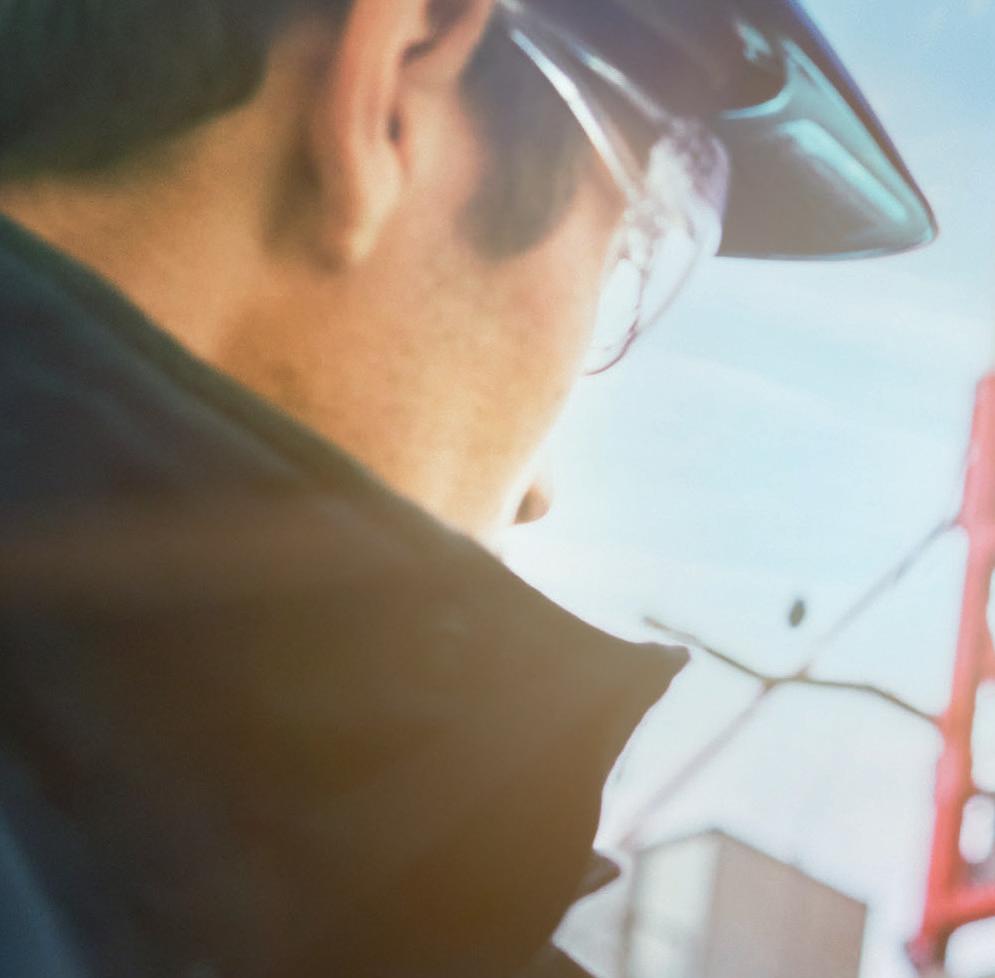
By the year 2030, OMV plans to produce up to 9 terawatt hours (TWh) of energy a year through geothermal applications, thereby significantly helping to further reduce carbon emissions.
Since geothermal drilling is comparable to drilling for oil or gas, OMV can draw on decades of experience in the identification of deposits and their economic development. The activities of OMV in this area are focused on the hydrothermal utilization of deep geothermal power, using natural deep-water deposits up to 5,000 meters below the earth’s surface to produce energy. OMV currently has two ongoing projects in the field of geothermal energy: one in the Vienna Basin in Austria where Wien Energie and OMV join forces to develop deep geothermal energy and the other in Lower Saxony, Germany, where OMV has a 50% stake in the geothermal “Projekt Thermo” and cooperates with various partners.
Focus on industrial application











Experts within OMV believe that the geothermal conditions in the Vienna Basin are suitable for use as a direct source of heat, while the geothermal energy in Northern Germany could be used to generate electricity. Major potential is also seen for industrial and agricultural applications, such as the supply of heat to breweries, dairies, the paper industry, aquaculture or greenhouses.

Find out more at: omv.com



























































































































































































































































































































































































































































































































































































































































